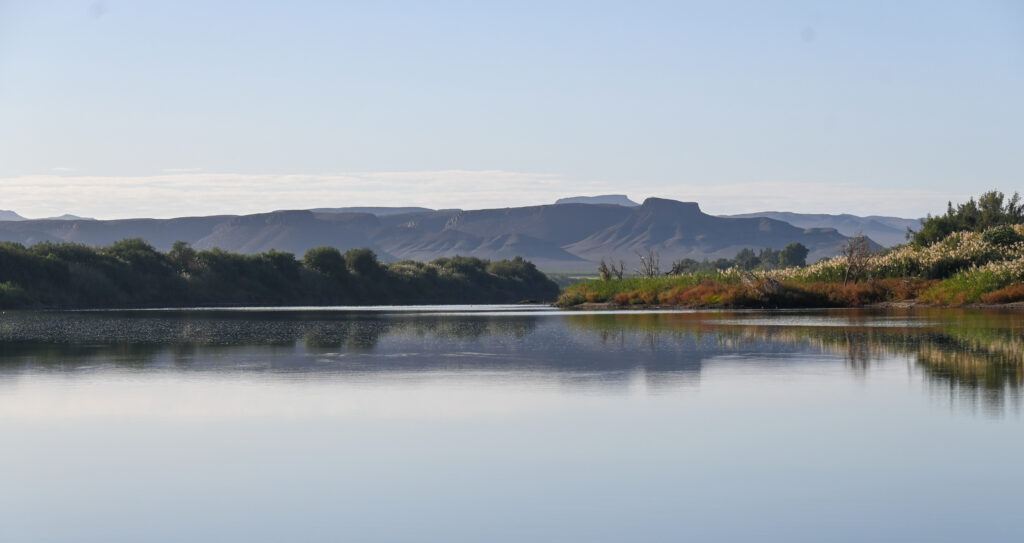
Our flight from Heathrow took us via Istanbul to Cape Town. Our flights from Istanbul to Cape Town return are one of few flights not included in our Round The World tickets, as it allows us to return to Europe after Africa (one of the rules of a RTW ticket is you cannot return to a ‘sector’ once you have gone to another ‘sector’).
Logan and I travelled to East Africa in 2008 thinking that Africa wouldn’t be a place we would travel later in our lives with kids. However, we hadn’t been in Africa long before we knew that we would definitely bring our kids here if we were lucky enough to return. The kids have always known how much we love it here and were excited to see it for themselves.
We flew into Cape Town as that was where we had organised to collect our 4×4 self-drive vehicle. As our truck would be ‘home’ for 2 months, Logan had spent a long time researching and choosing the vehicle that best suited our needs, opting for a low tech battle truck. The company ‘Bushlore Africa’ has been wonderful to work with and we feel really happy and confident with what we chose.
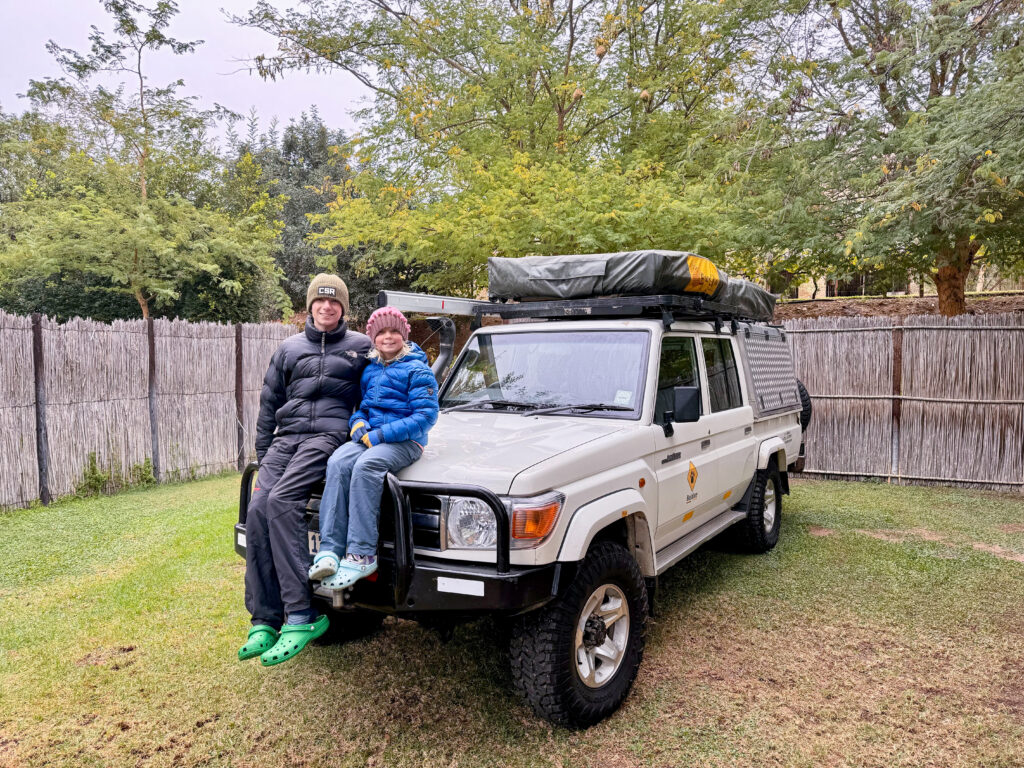
We spent the first 2 days in Cape Town ‘readying’ ourselves for our adventure – making sure everybody had the clothes and footwear they needed, filling our food storage with dry goods, and setting the truck up how we liked it.
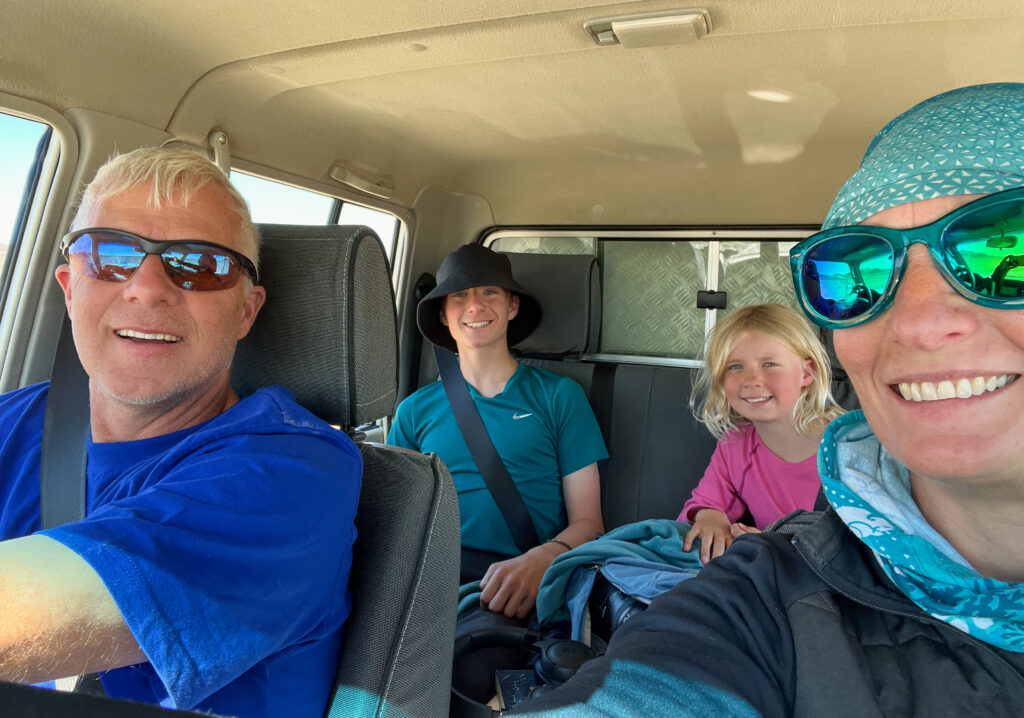
From there we started heading north towards the Namibian border. We stopped for 1 night along the way, our first chance to sleep in our rooftop tents. Although it was really cold overnight, everyone was comfortable and slept well, and it was a buzz to see the Southern Cross overhead in the starry night sky.

It took some time to cross the border into Namibia as we had to prove with passports, birth certificates and an informal interview that our kids belonged to us and that they weren’t travelling against their will. It was good for the kids to see the importance of taking border crossings seriously. We had to laugh when the customs officer who checked the contents of our truck took a cider ‘for later’ as a part of his checks!
Our first stop in Namibia was ‘Bundi Orange River Rafting’ at Noordoewer for a 3 day rafting trip down the Orange River.
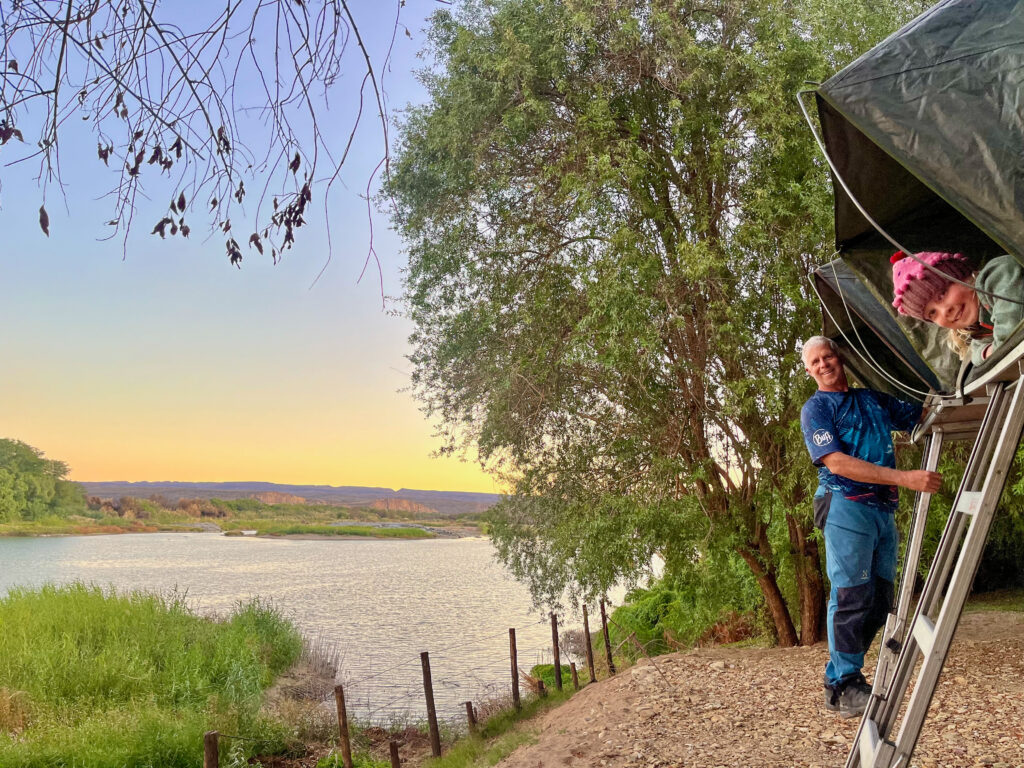
The Orange River borders South Africa and Namibia so we had what is called ‘wet passports’ to allow us to stop on either side of the river. As it is winter in Africa, it is the low season for rafting so our trip was just us 4 and 2 guides, John and Ronnie. We had the most marvellous time!
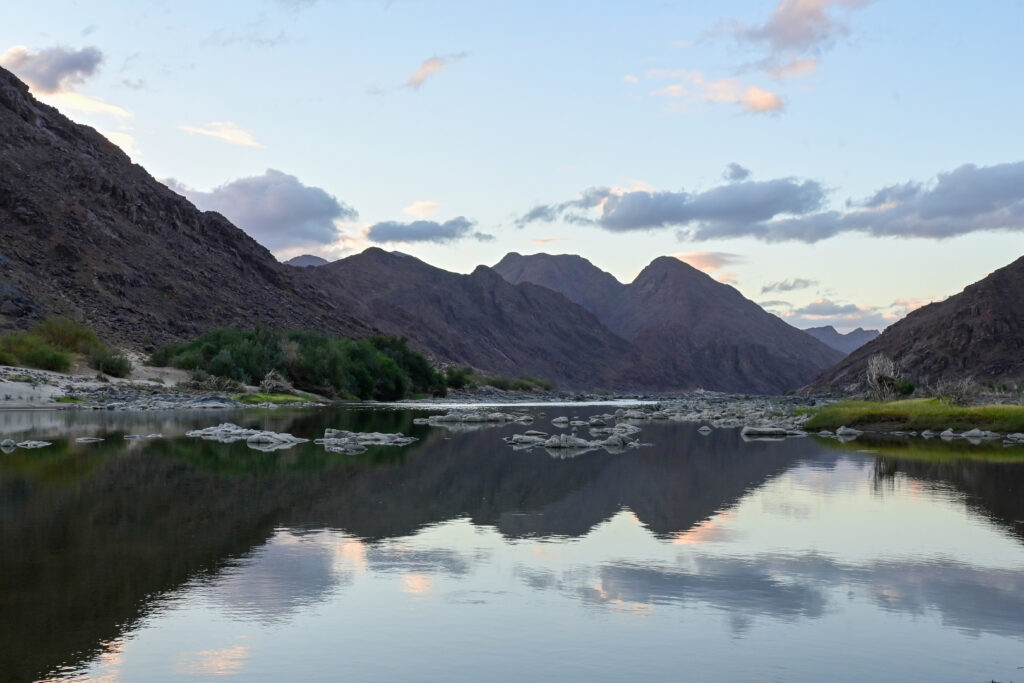
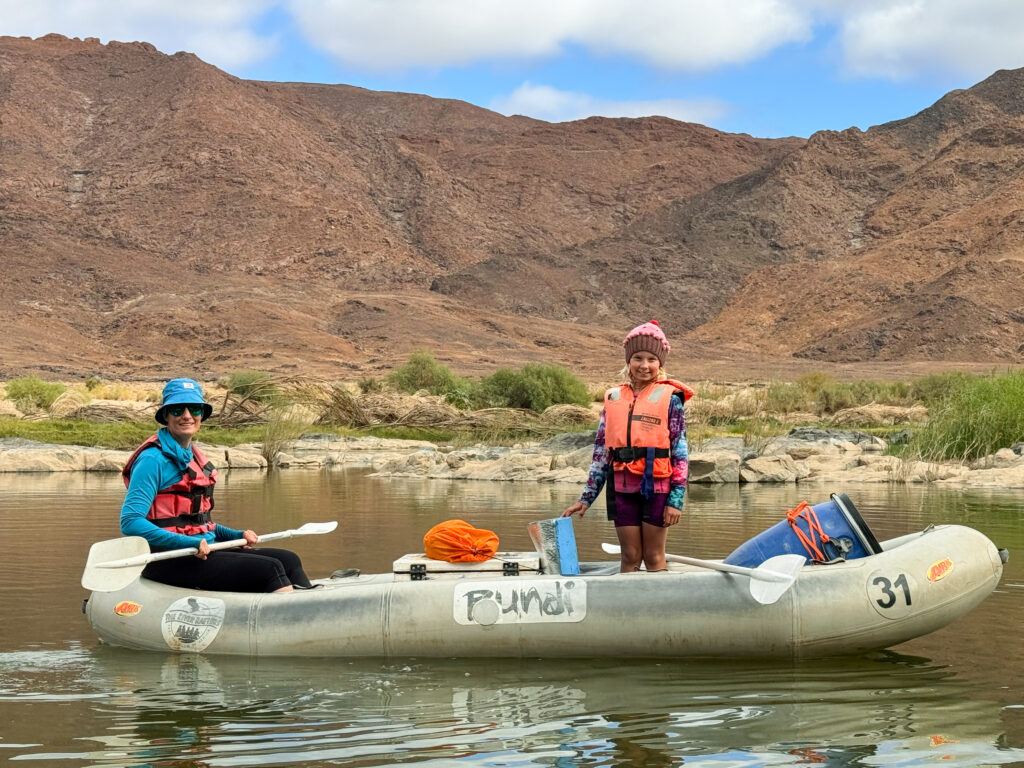
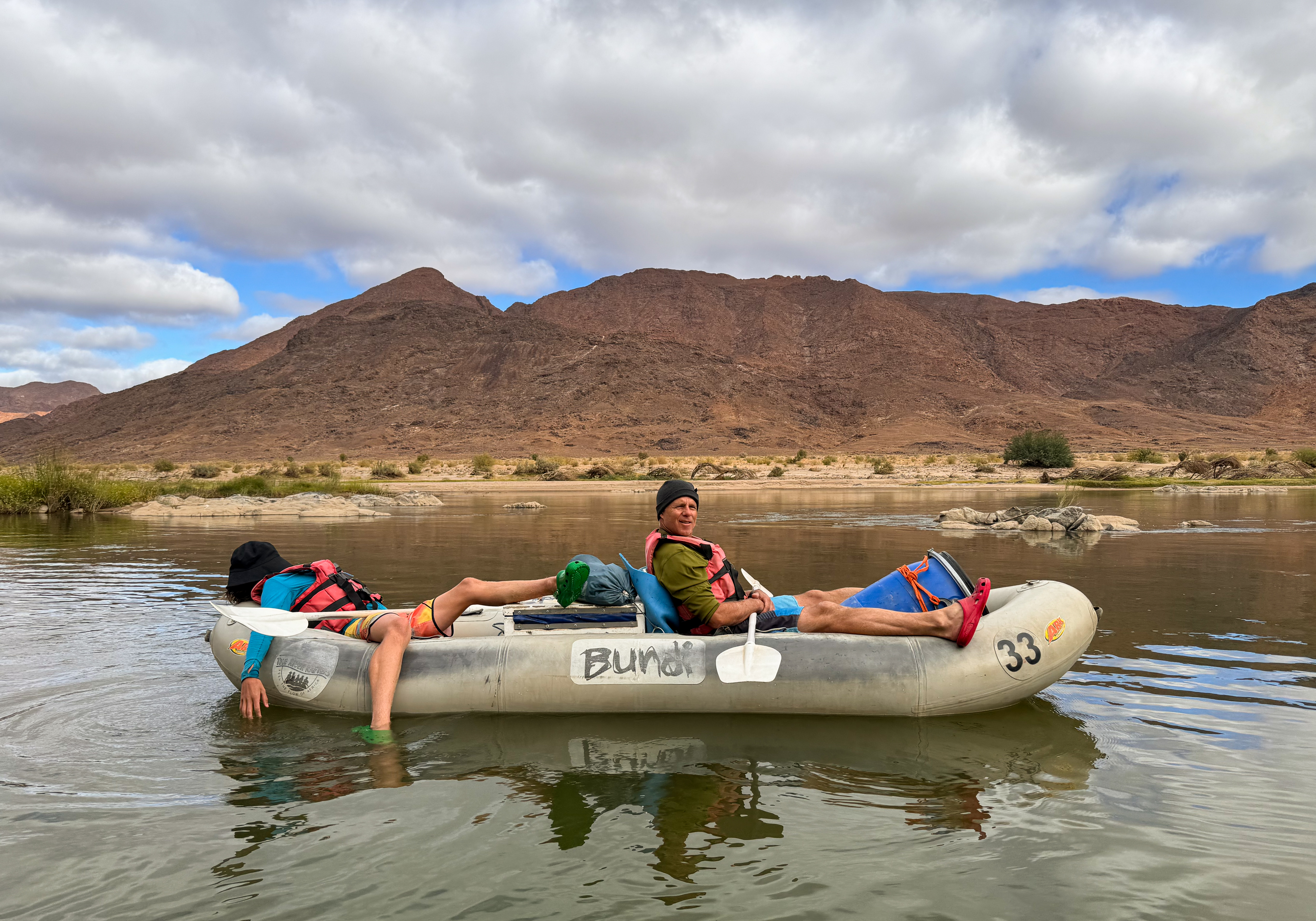

The river was really low so the rapids were quite small but it was glorious to drift down the river. We swapped seats multiple times a day so that we could share being the captain and the engine. The paddle was pretty heavy and cumbersome for Zara but she did really well, and Lucas was a great captain.
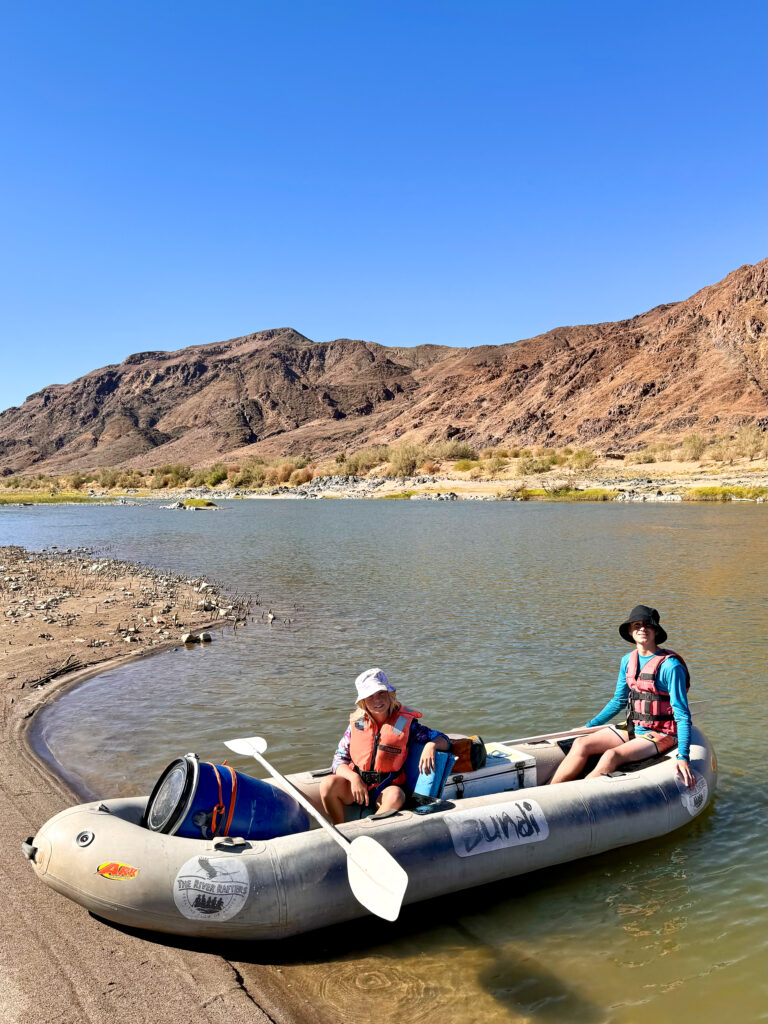


The riverbank was teeming with life – HUGE monitor lizards, baboons, a huge variety of long-legged wading birds, a brief encounter with clawless otters, and the ever-graceful fish eagle.
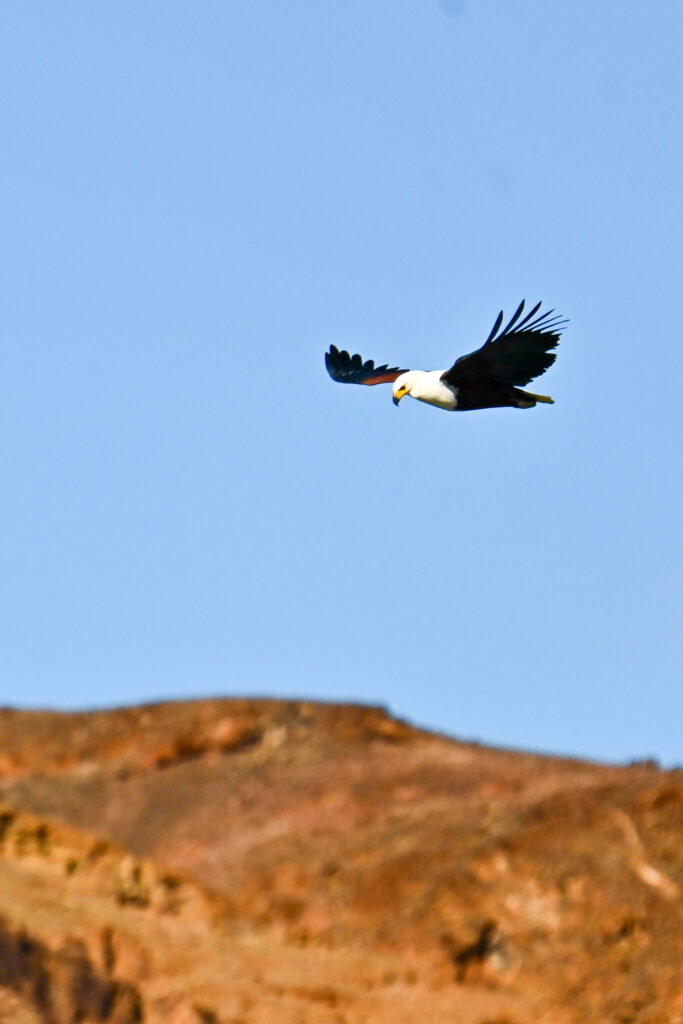

Our guides were absolutely wonderful and were so great with the kids.
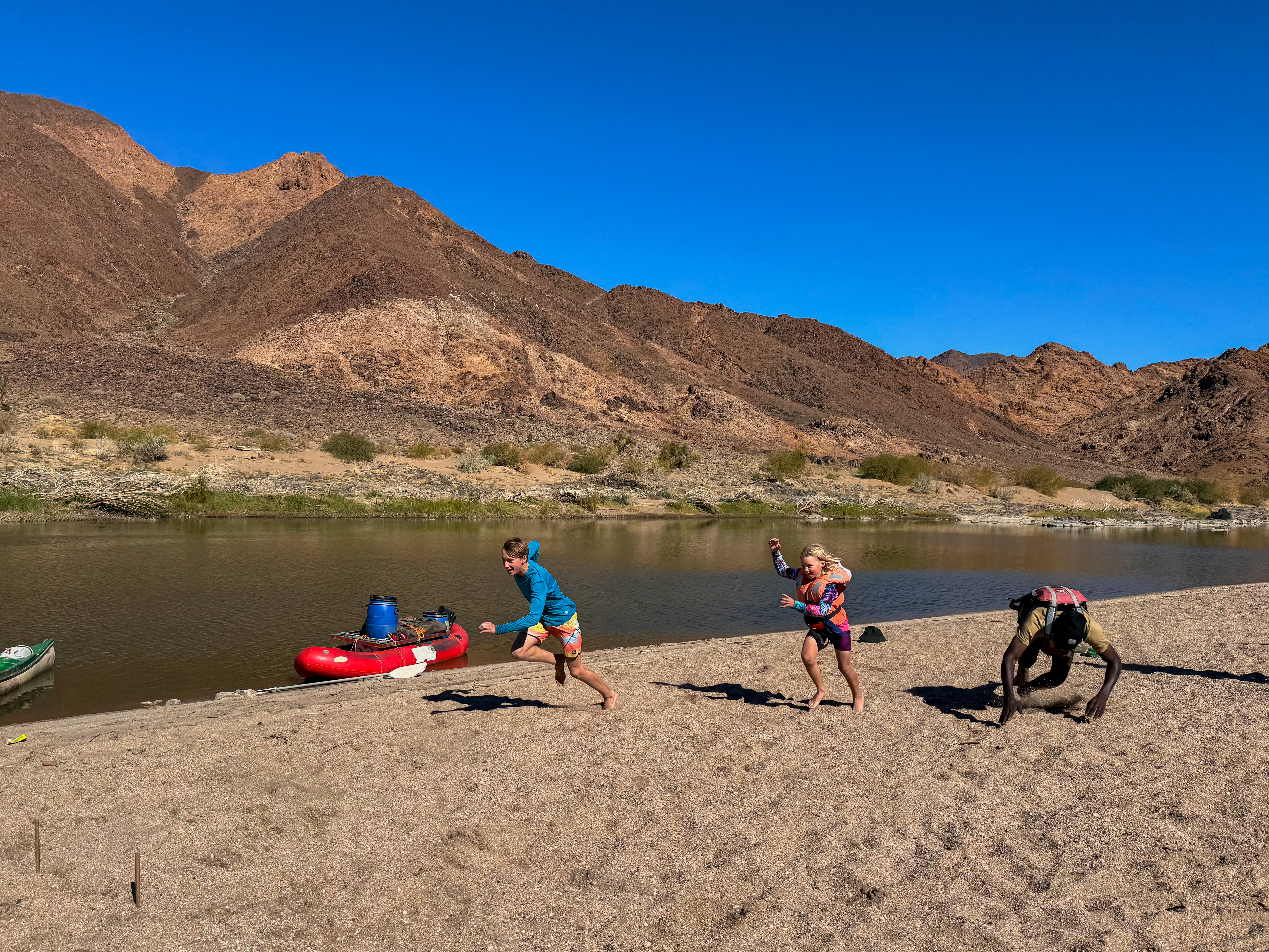
The kids loved playing in the river and on the riverbank.
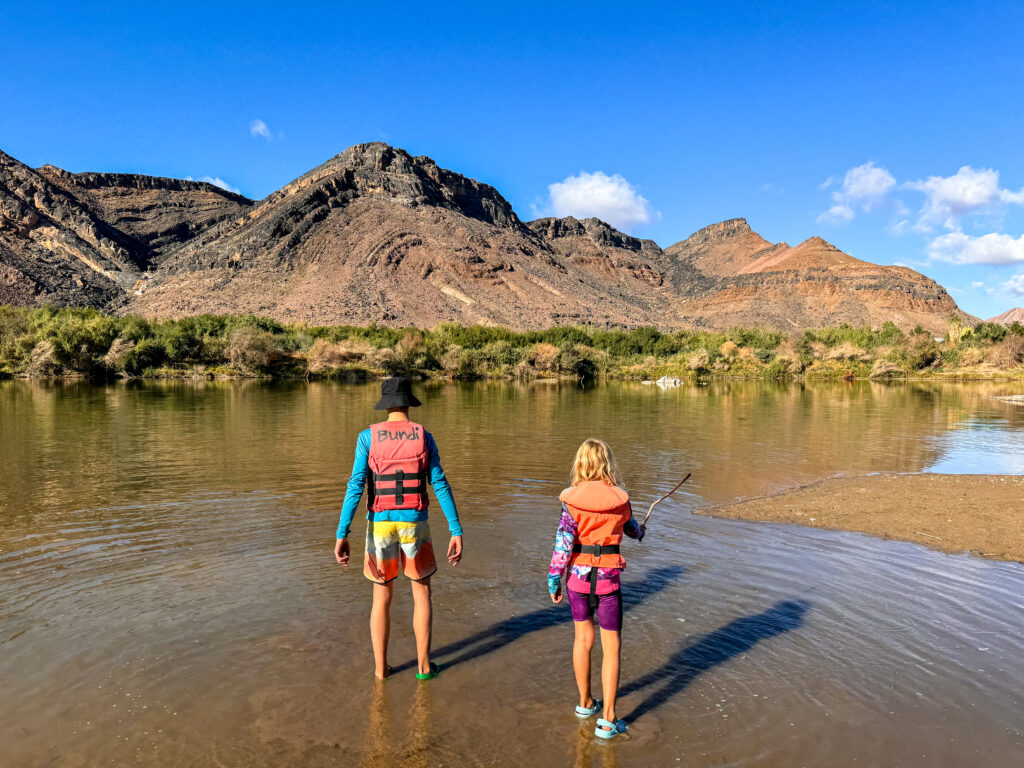
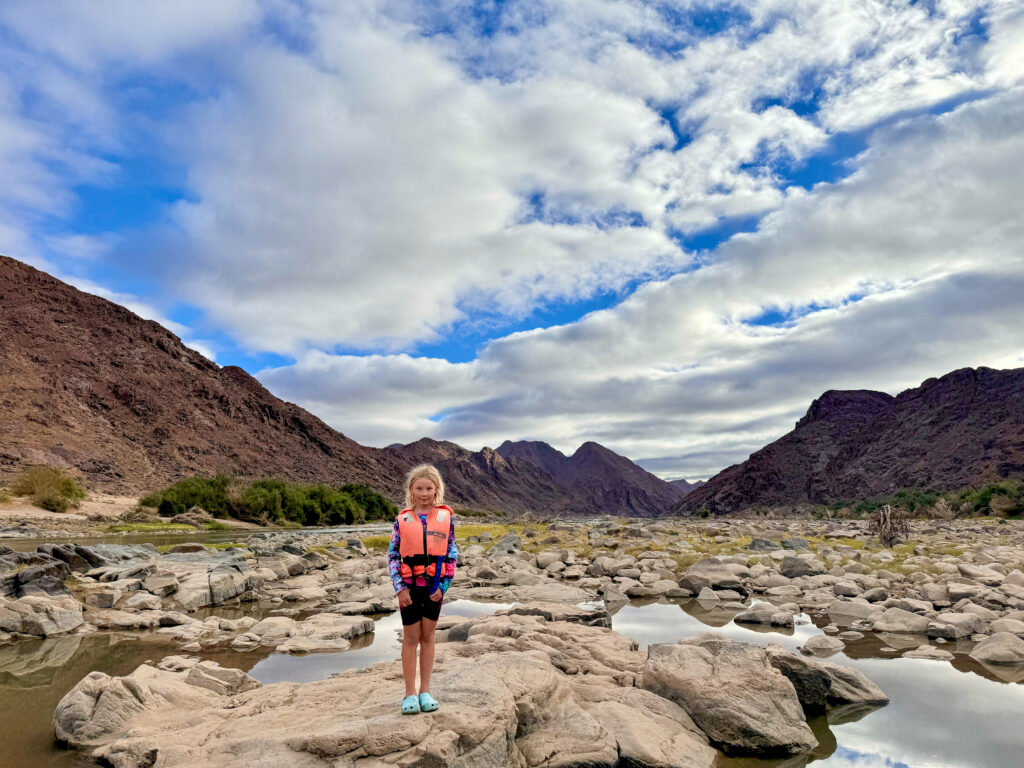
The guides made a campfire at night and in the morning to do the cooking and each time, the kids made their own campfire to play with too.
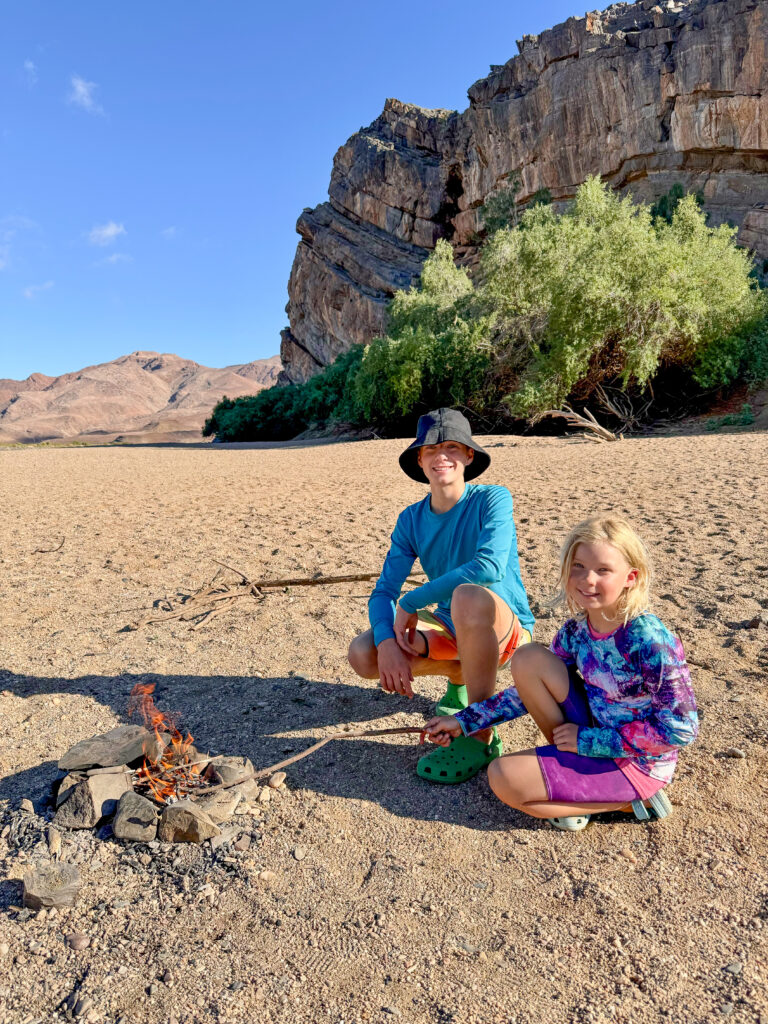
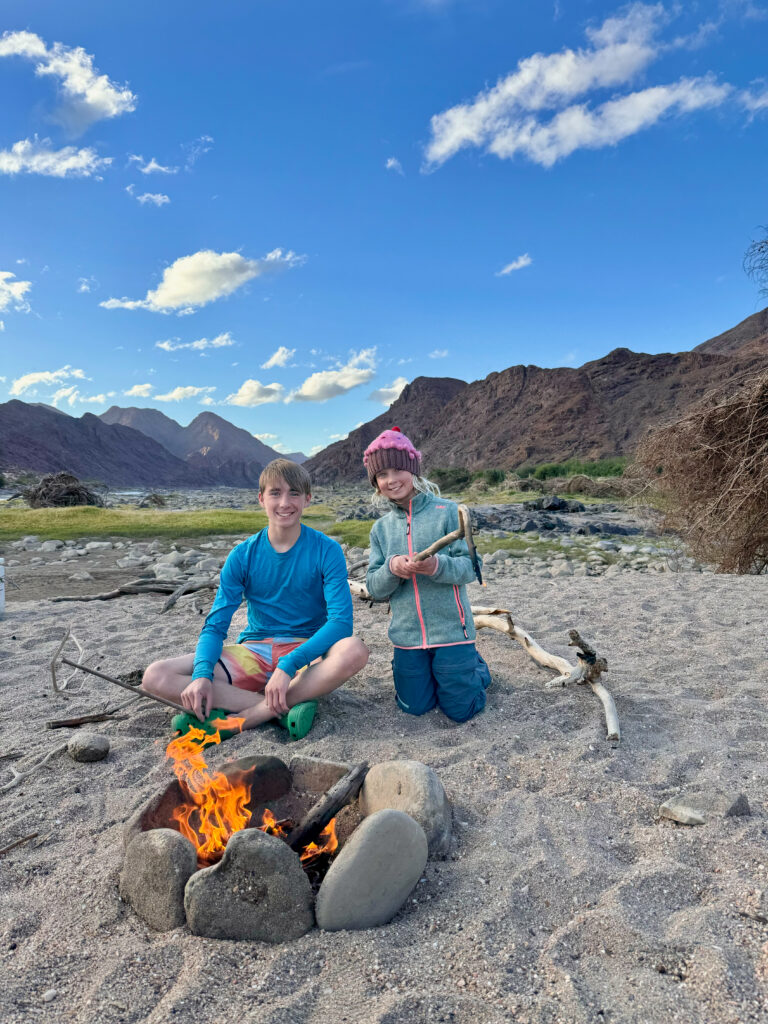
We loved sitting around the campfire with them, sharing information about our countries and lives. The days were so relaxing and the night skies were beautiful.
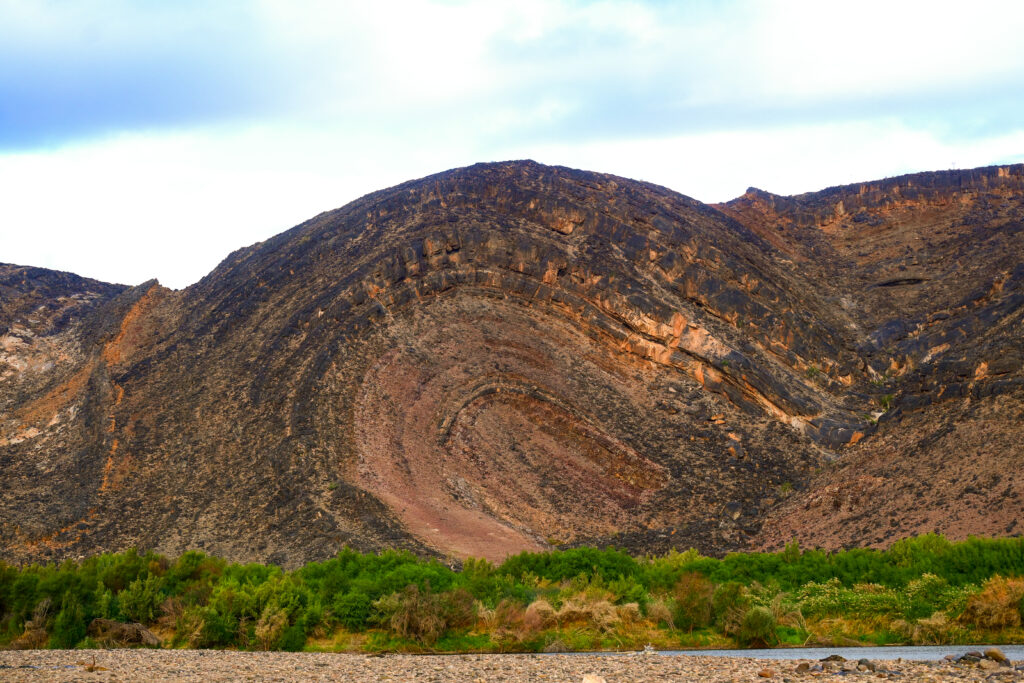
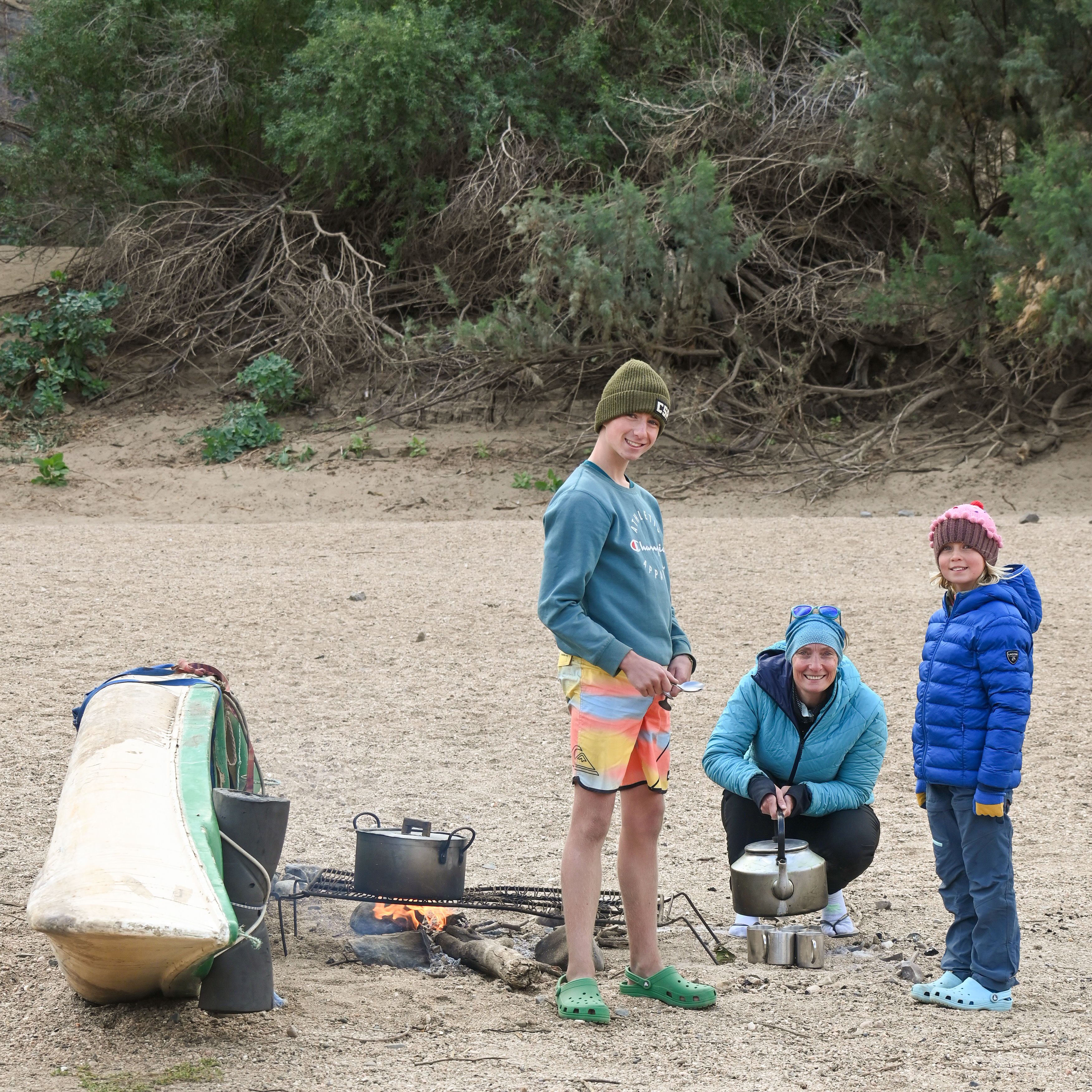



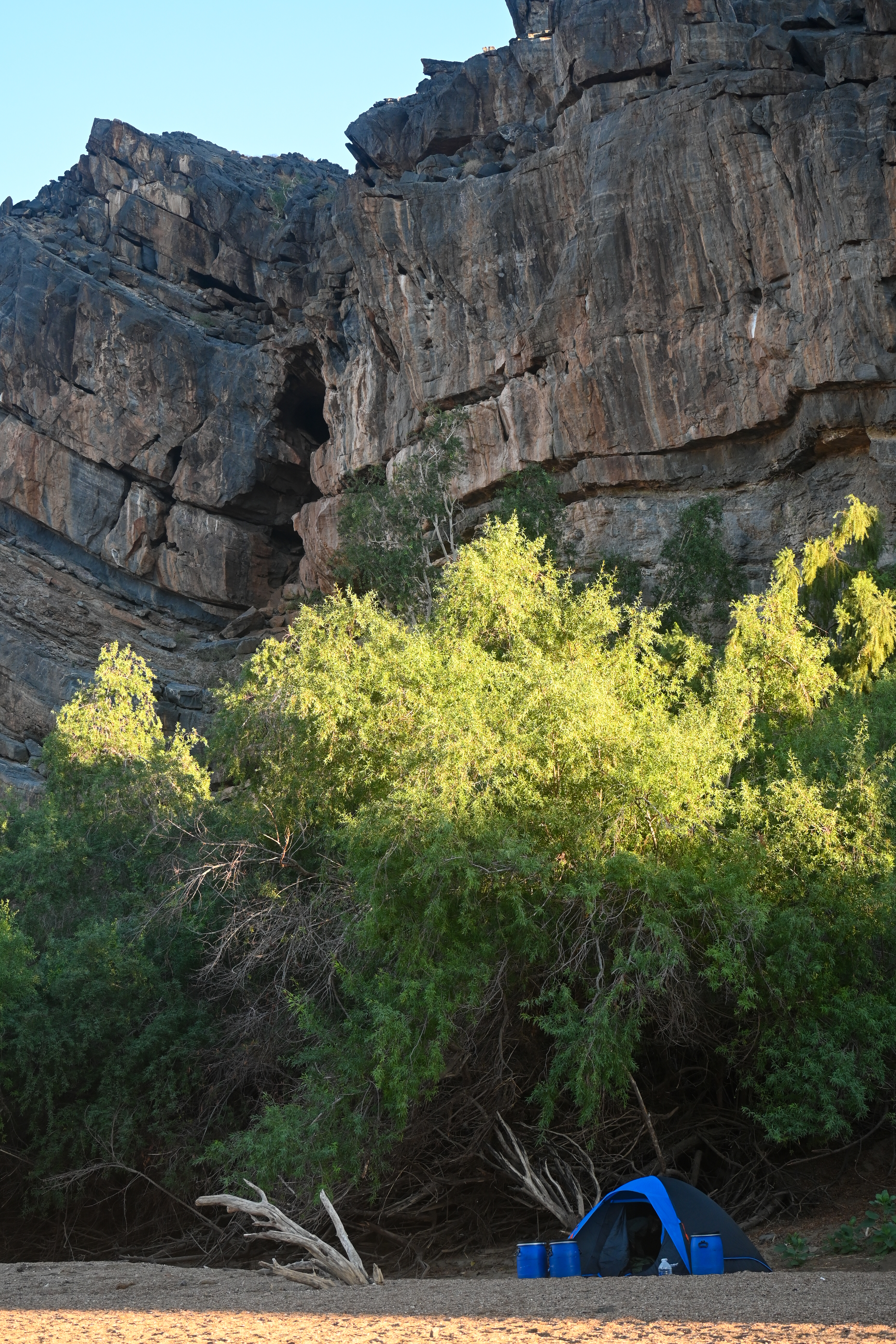

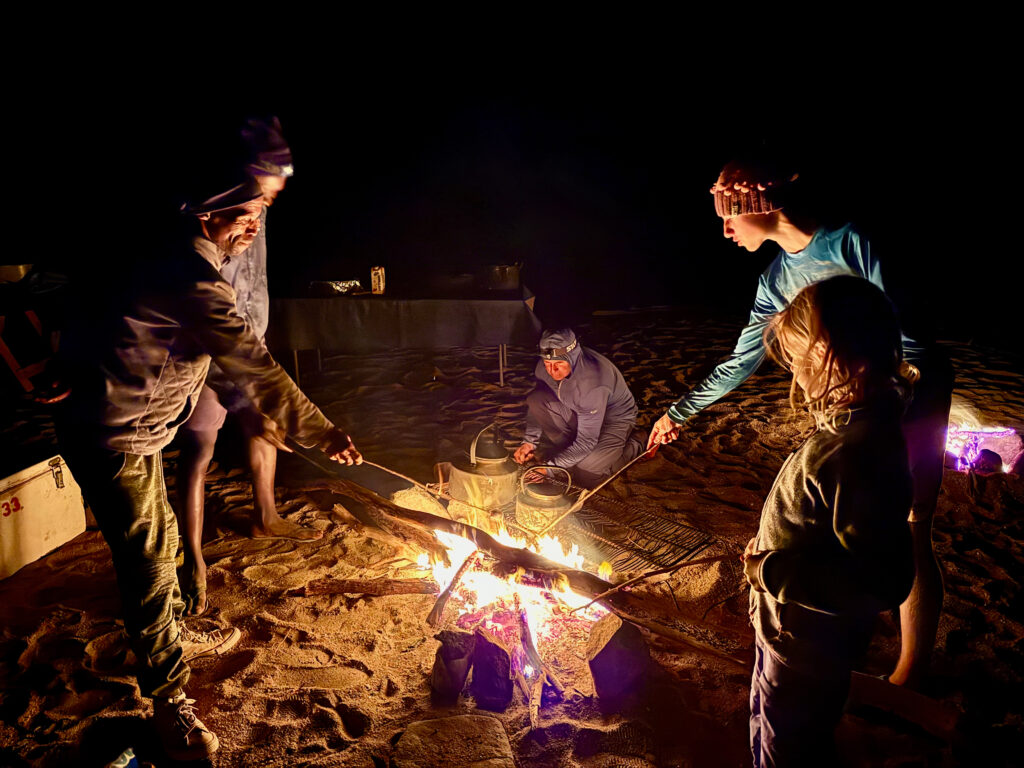
From Noordoewer, we headed to the coastal town of Lüderitz. Our main reason to go there was to visit the ghost town of Kolmanskop. Kolmanskop was built specifically as the headquarters of Namibia’s diamond-mining operations post WW1. It was a thriving town boasting a bowling alley and theatre, but by 1956, areas richer in diamonds had been discovered and the town was deserted. Now the town is at the mercy of the shifting sands. Zara was very excited to find some crystals inside a sandstone rock.
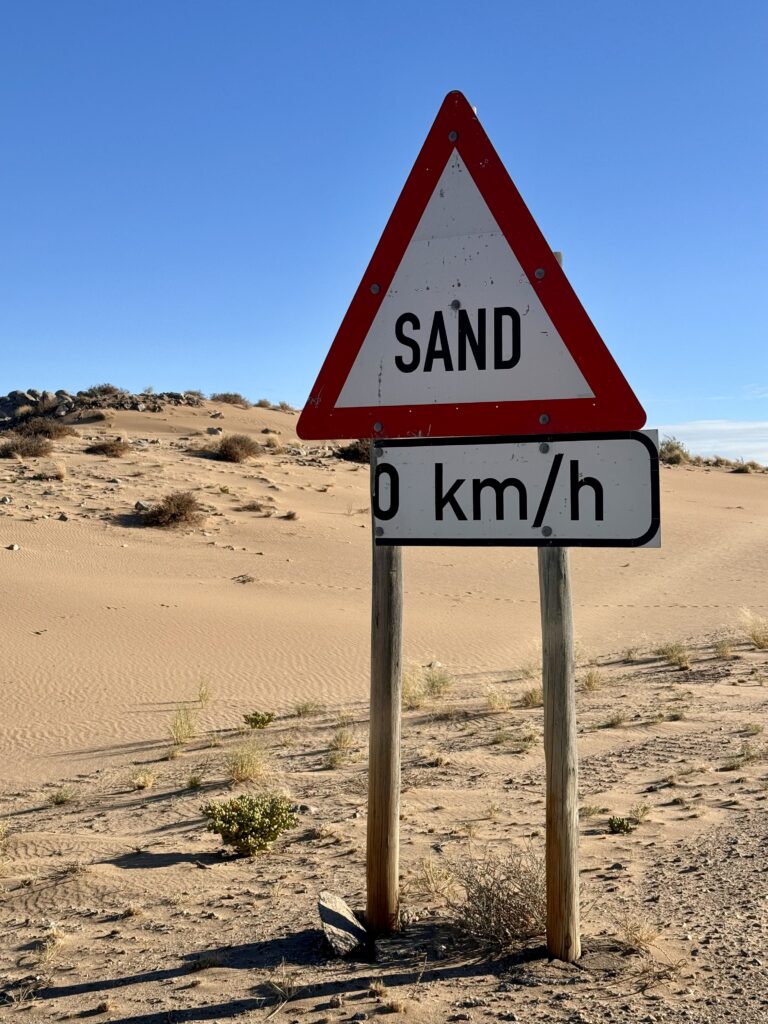
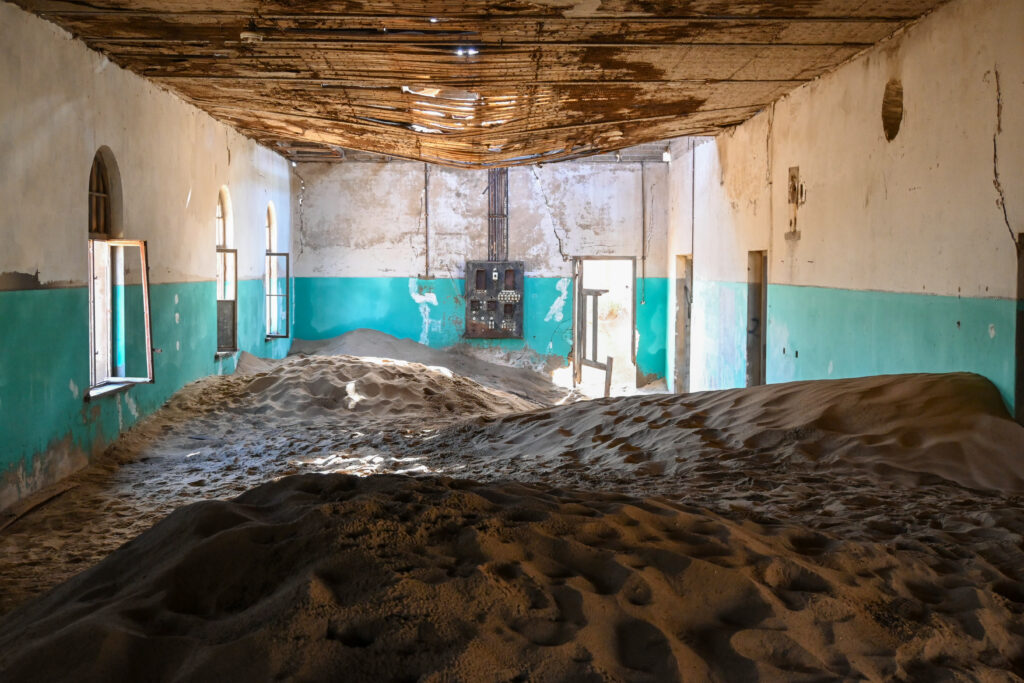


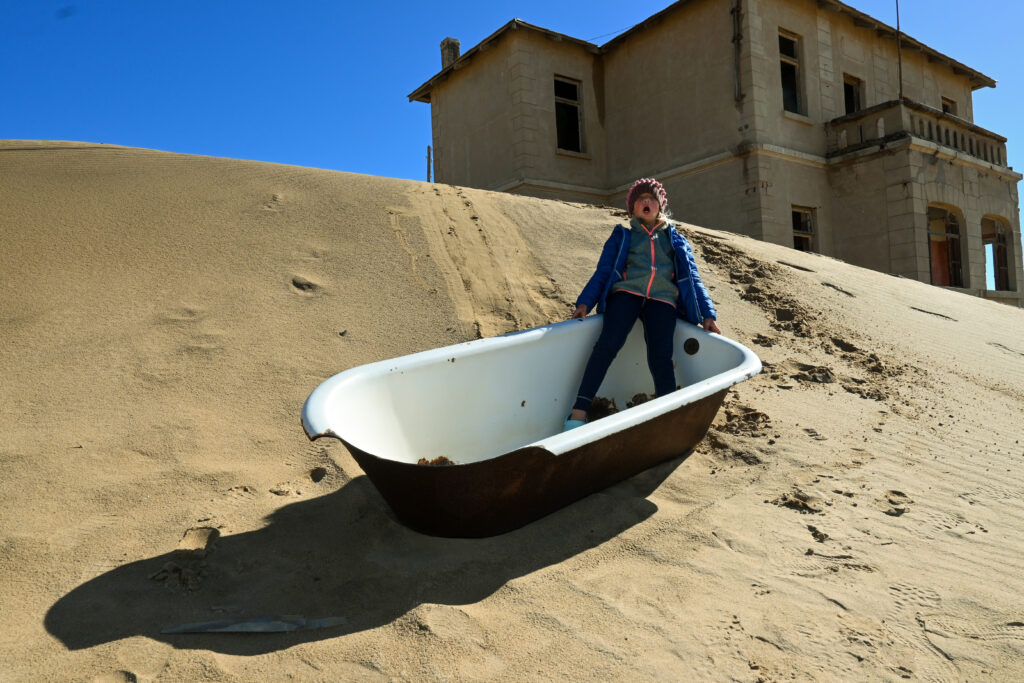
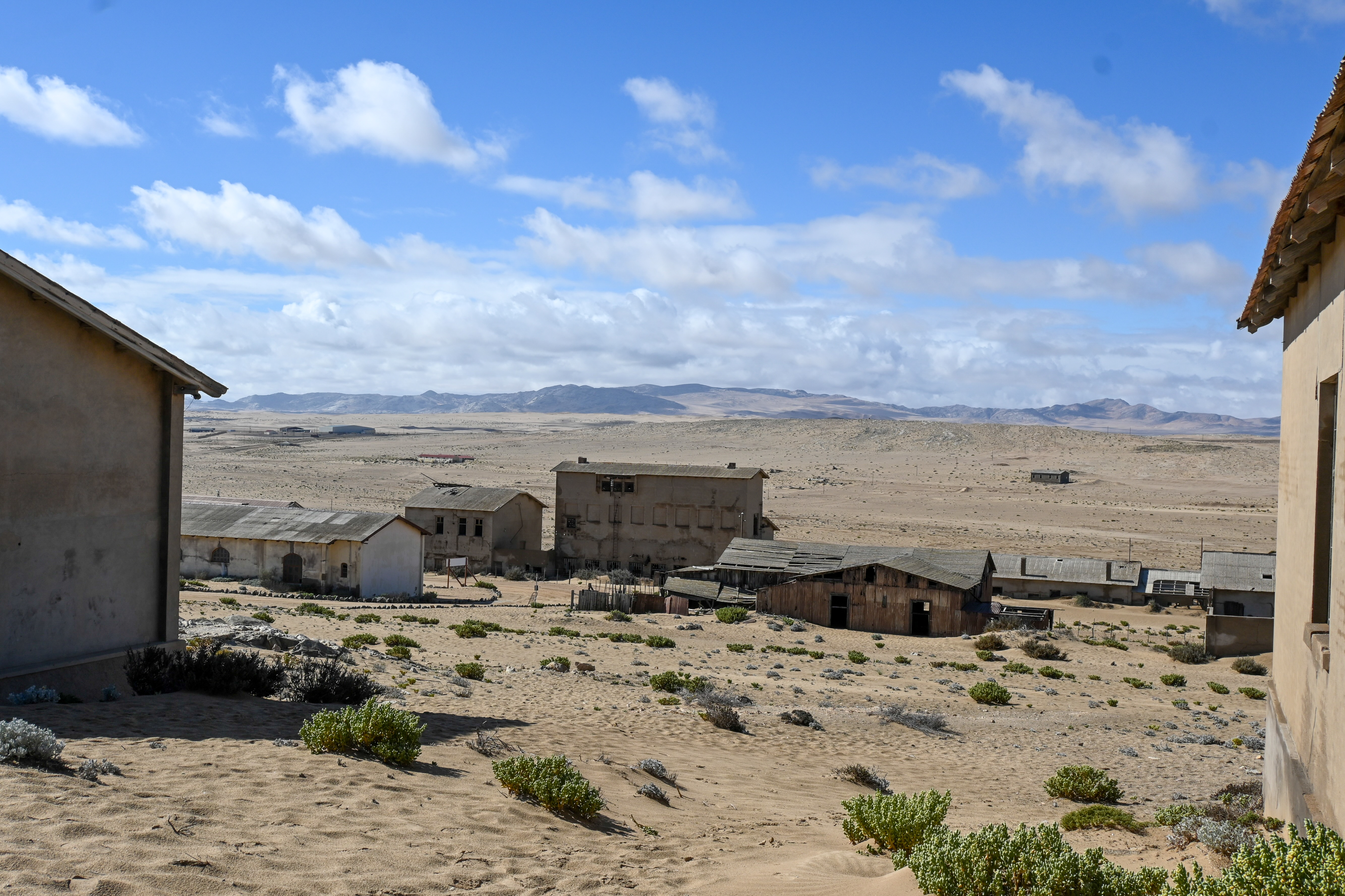
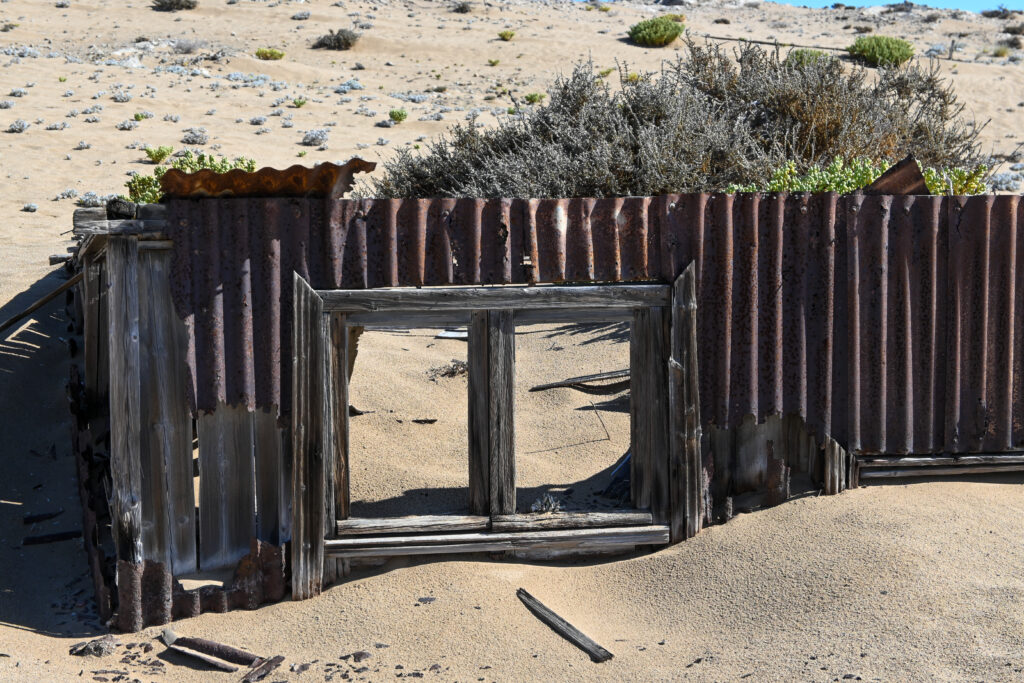
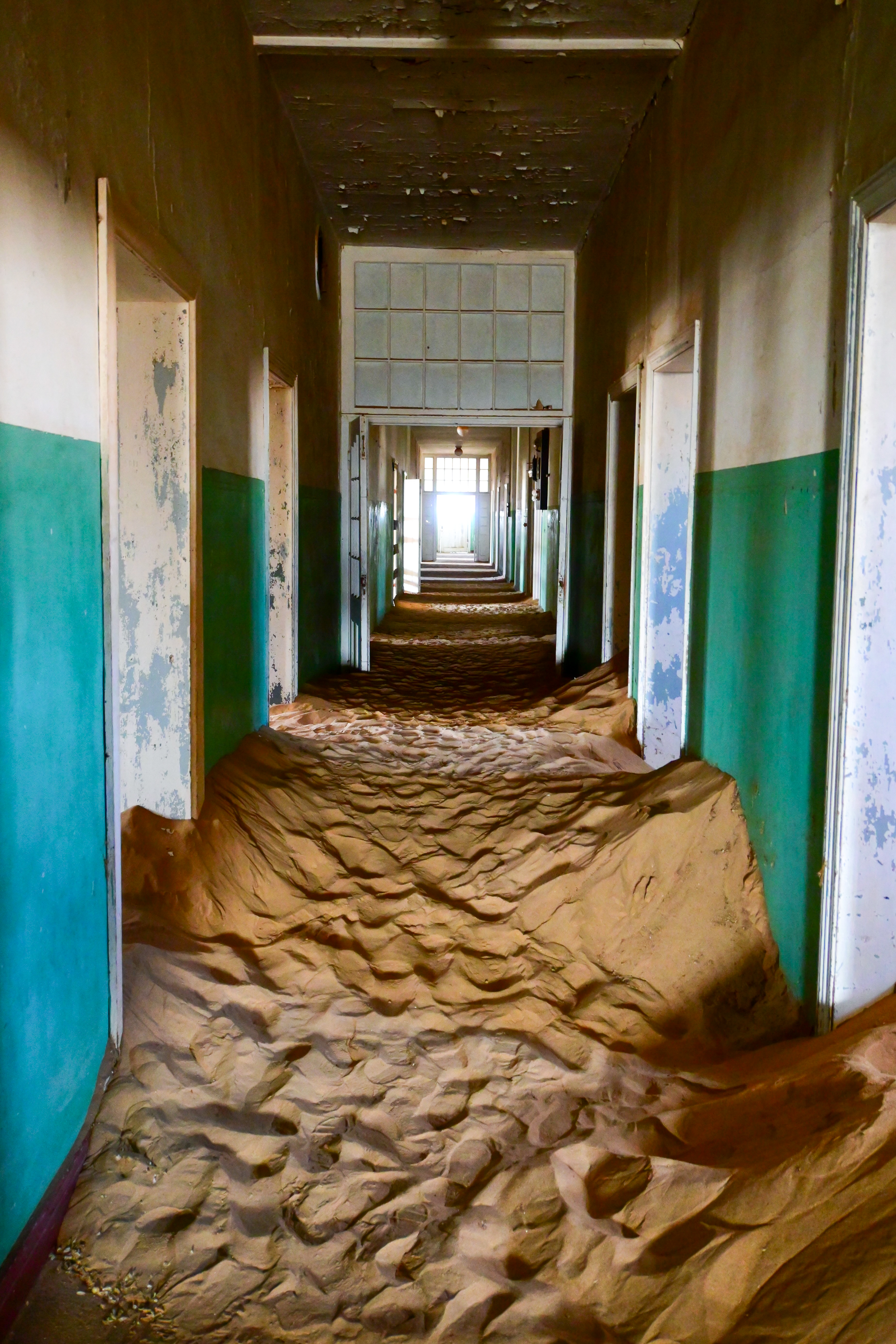

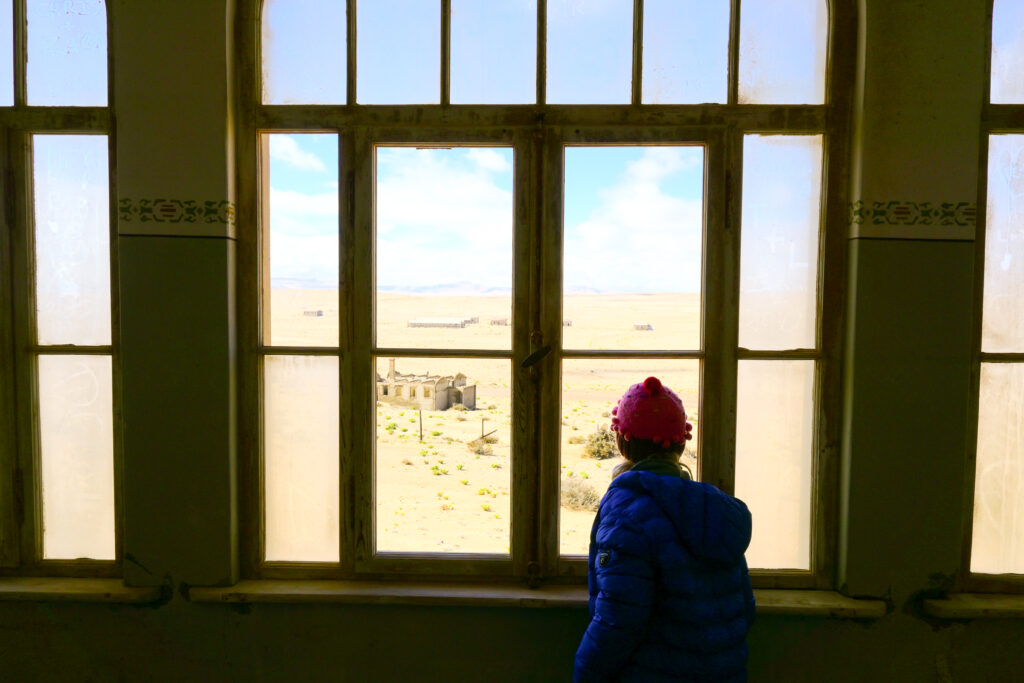
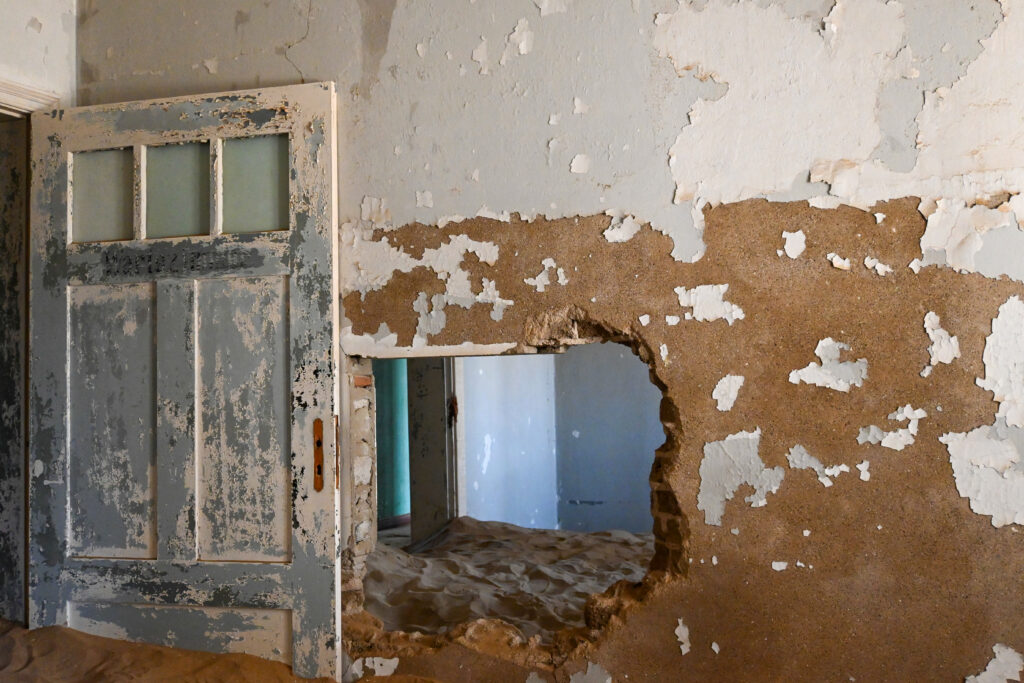
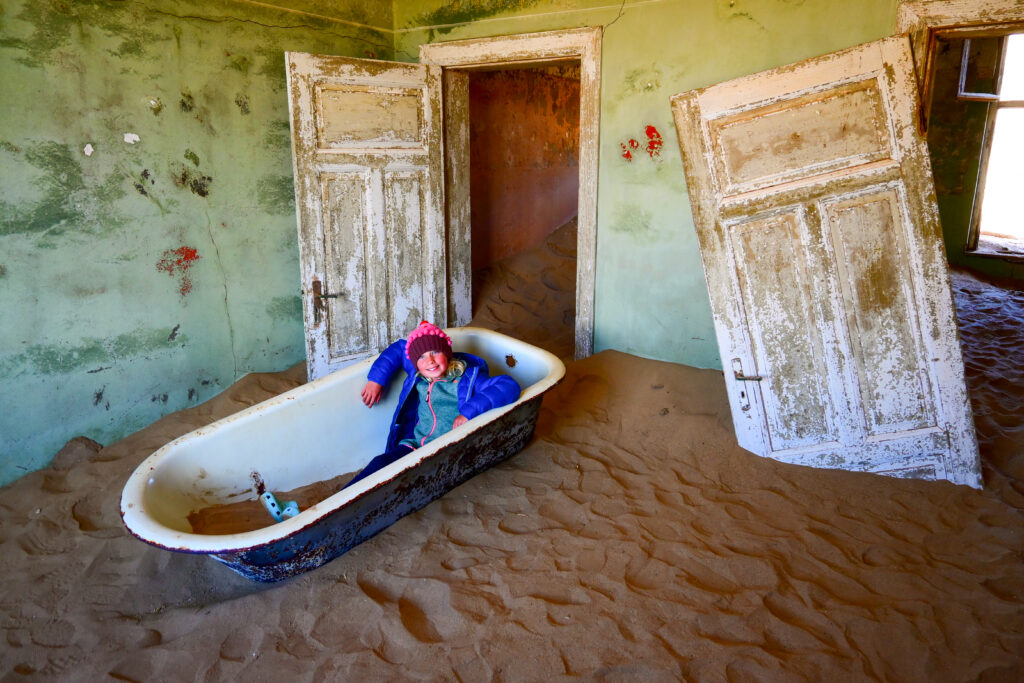
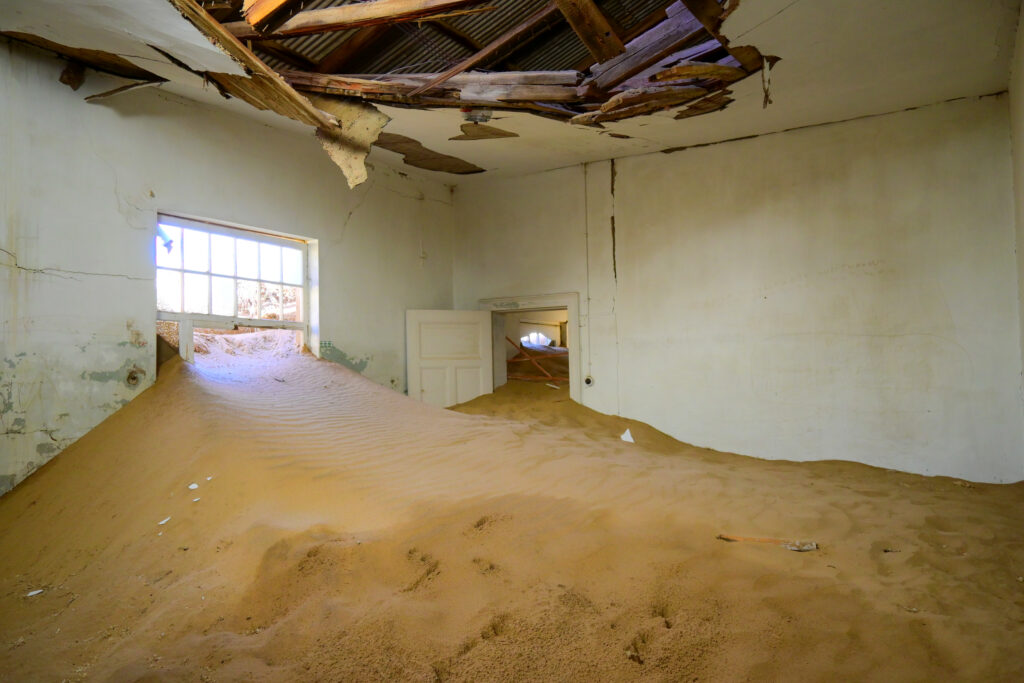
We carried on northwards via a 4×4 road through the Namib Desert, having our first wild camping night along the way. Whilst the towns in Namibia are pretty busy, once we get out of town, the roads are really quiet…and there is not a soul for miles and miles overnight.


Our next stop was Sesriem, at the gateway of Namib-Naukluft National Park. We climbed 3 giant dunes in 3 days – Elim, Dune 45 and Big Daddy.
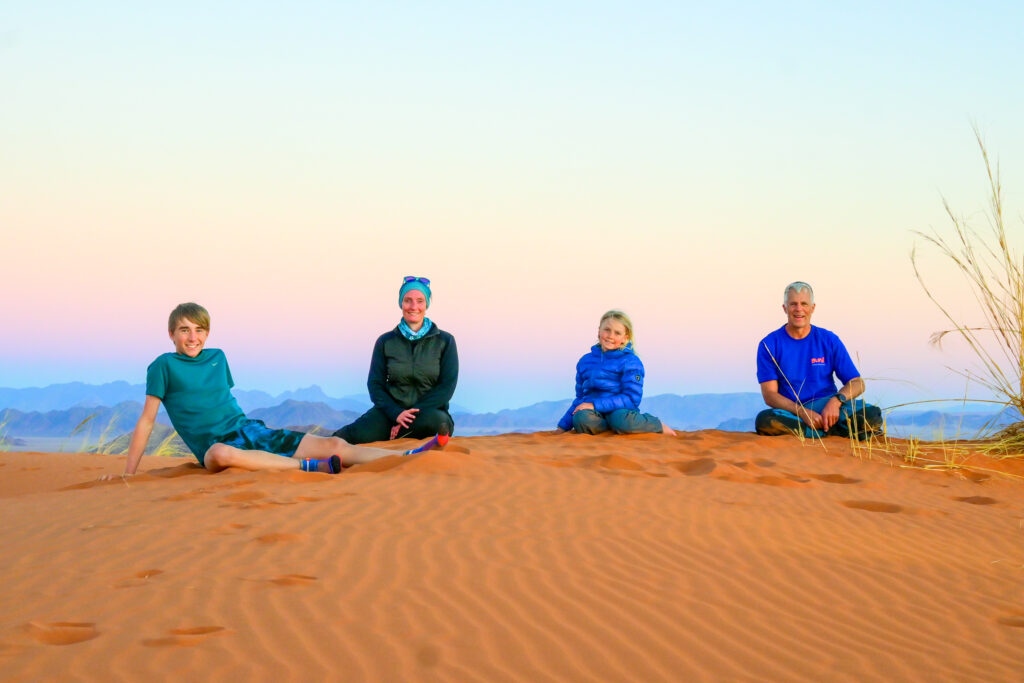

We were staying inside the outer gate of the National Park, but the inner gate is only open from 1 hour before sunrise until 1 hour after sunset. Dune 45 is located approximately 40 minutes from the inner gate, so if you want to be at the top for sunrise, you really have to climb quickly (climbing quickly being a bit tricky up a steep sand dune!). A man at the office told us that he could walk up in 20 minutes but that as we had kids, it might take us 2 hours. Always one for a challenge, Lucas motored up in 11 minutes and to be the first at top! The rest of us took just on 20 minutes.
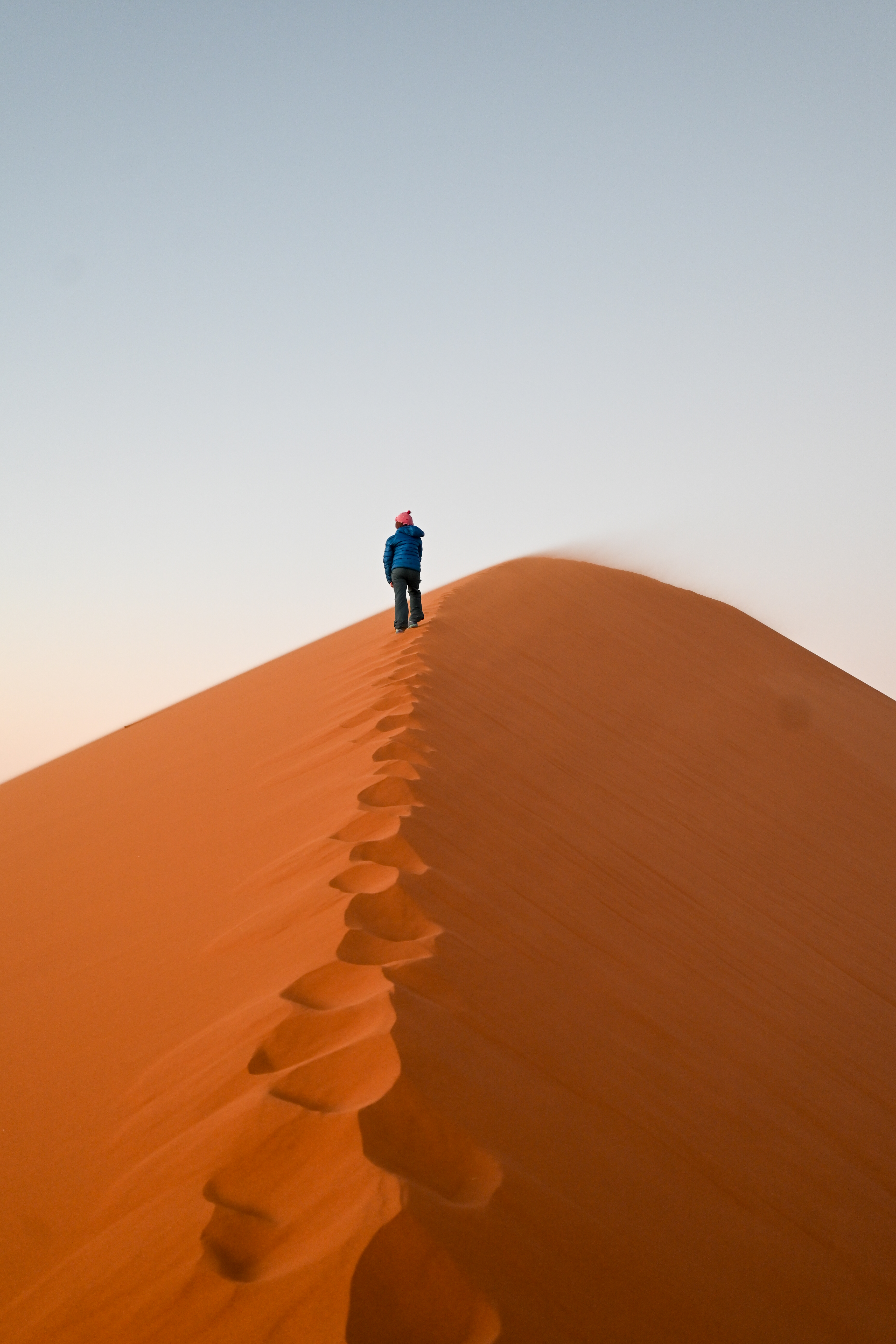
Soon the sun was peeking over the horizon – the sight of the orange sands glowing like fire against the brightening blue sky was absolutely phenomenal!

It was very gusty at the top so once our eyes had accumulated more than enough sand, we ran back down the dune in less than a minute! We had lots of fun climbing back up a shorter distance so that we could run back down over and over.
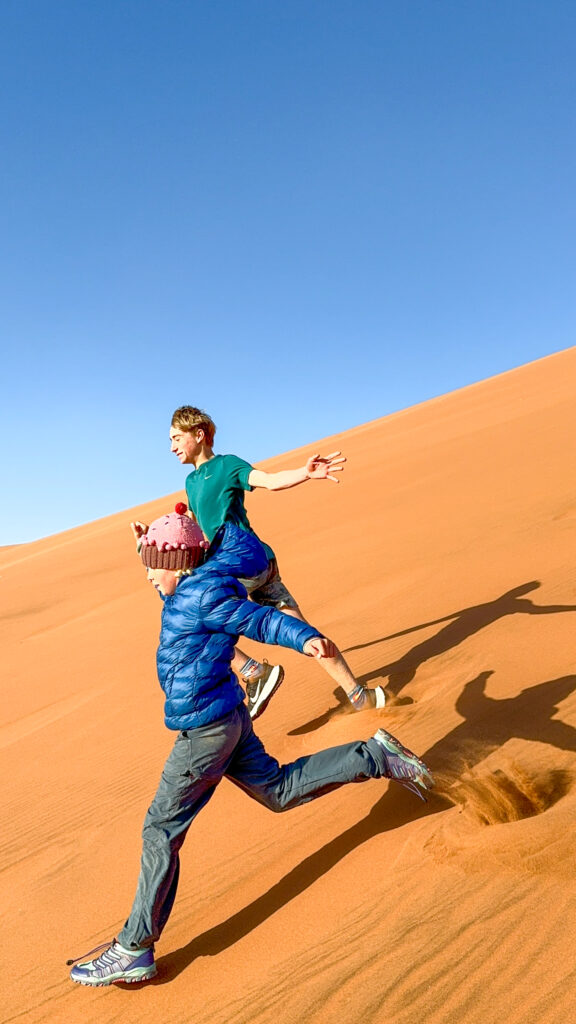
Once we had enough of climbing and running, we played shadows against the still-glowing dune.
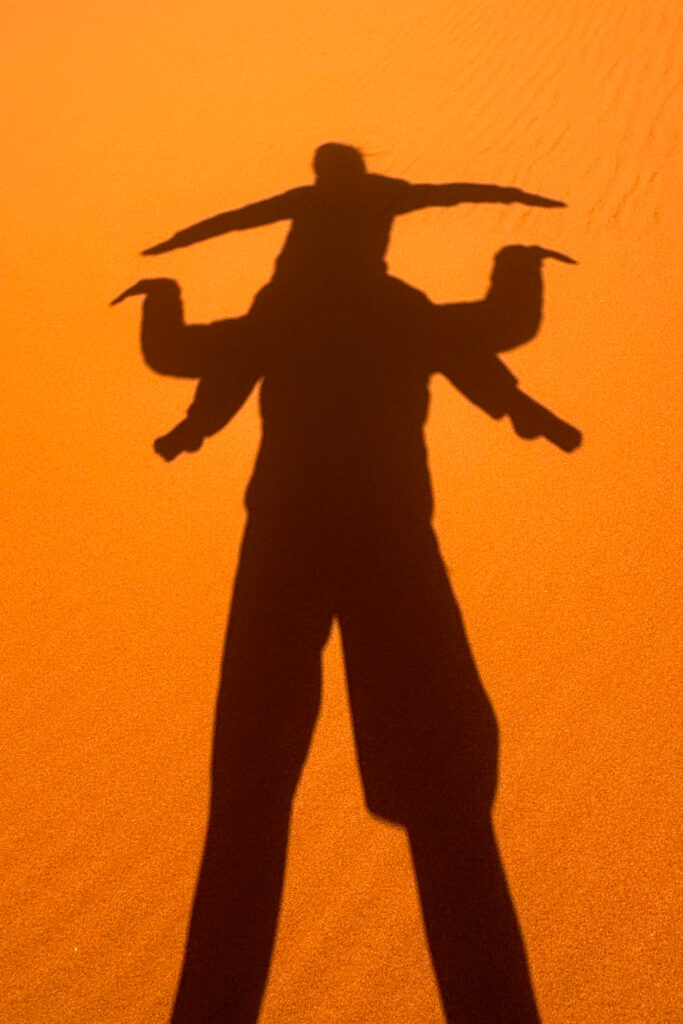
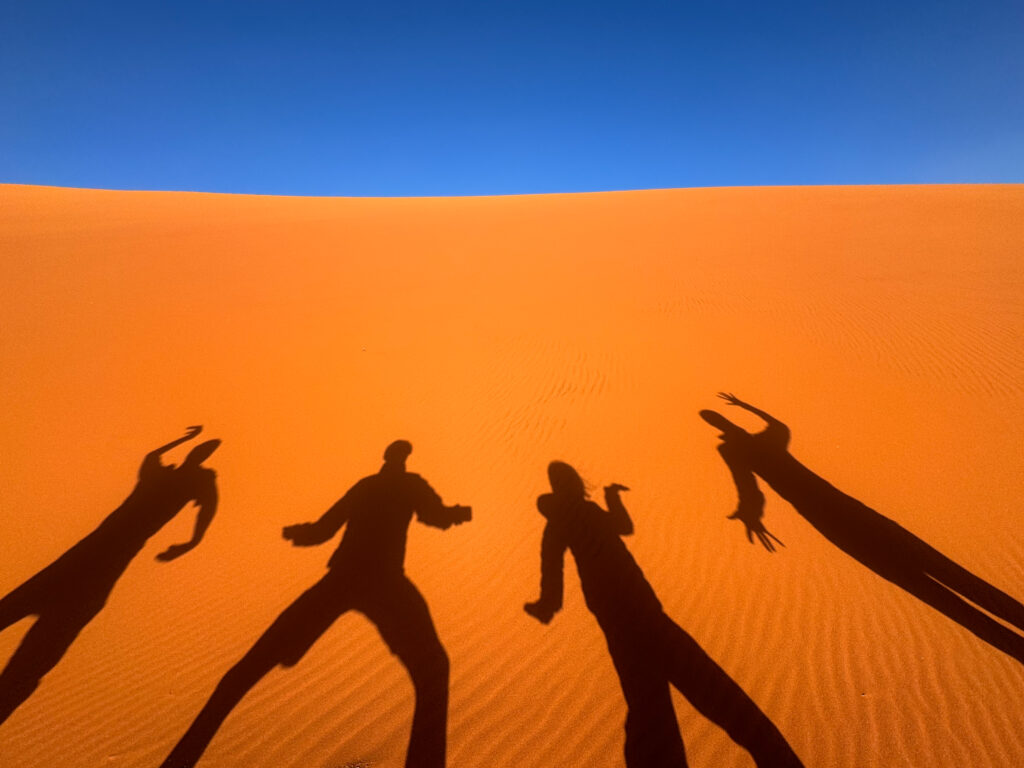
Big Daddy is just less that an hour from the inner gate so the next morning we watched the sun rise from the Sossusvlei salt and clay pan at the bottom of the dune.


Big Daddy is the tallest dune in the area at 325m tall, and took us an hour of ‘1 step upwards, half a step backwards’ to climb to the top! It was EXHAUSTING! We decided to take off our shoes and walk up in bare feet because our shoes got so full of sand and so heavy.
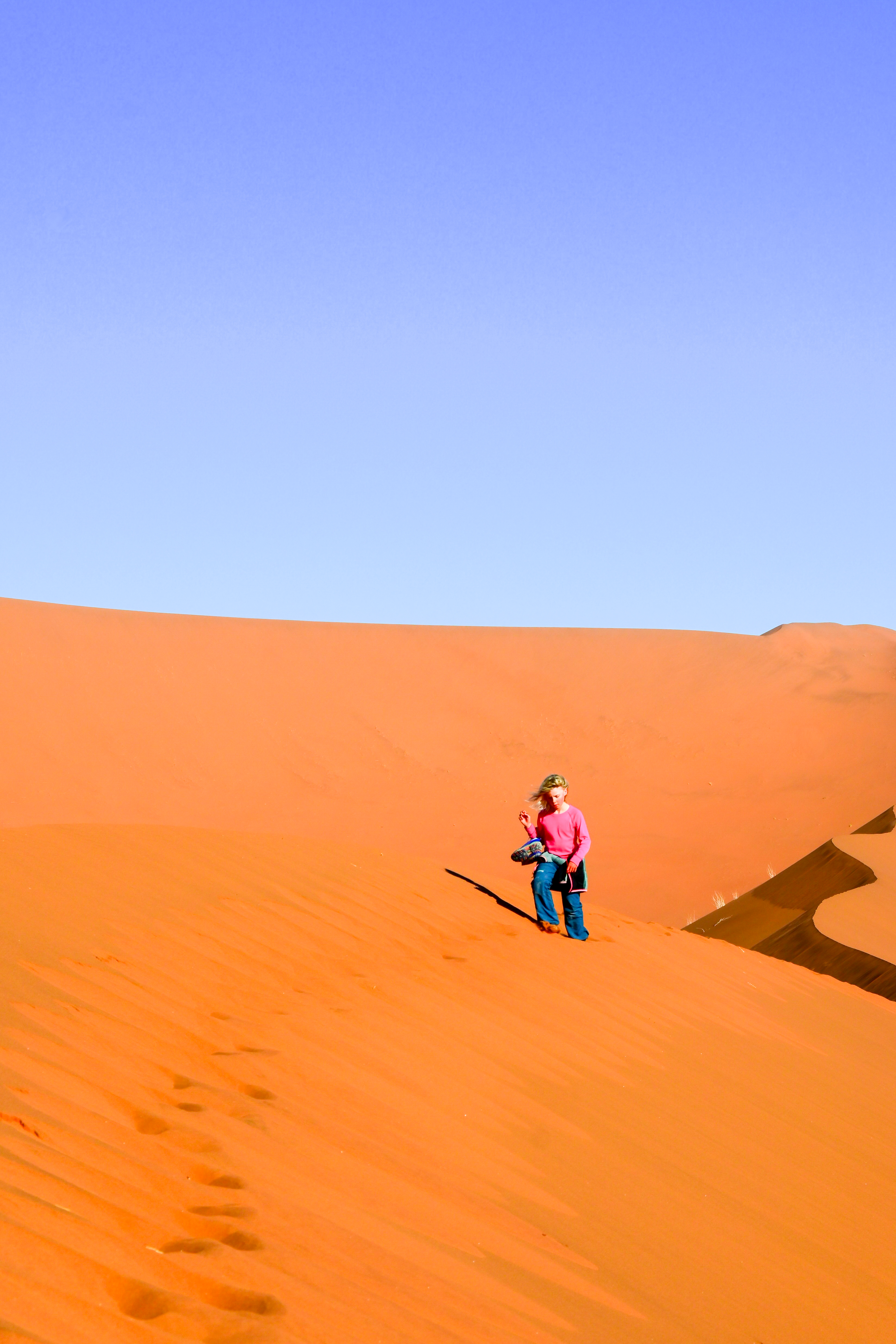
But the views at the top were breathtaking – it felt like you were on top of the world!
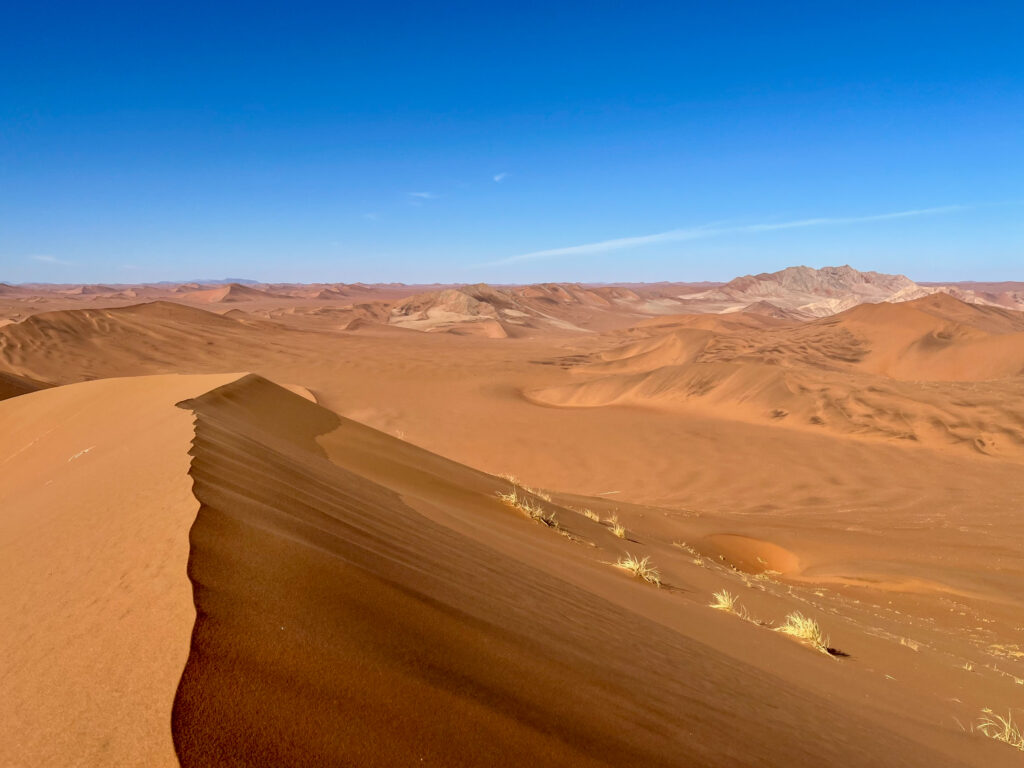
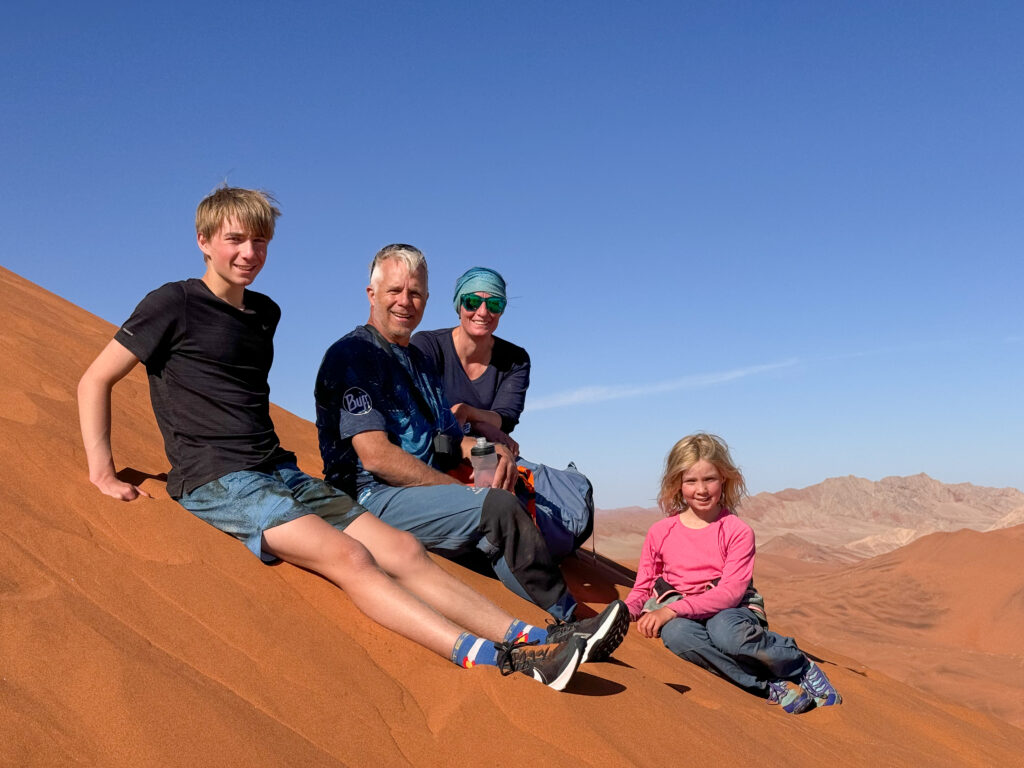
It was then a 2 minute run back down!
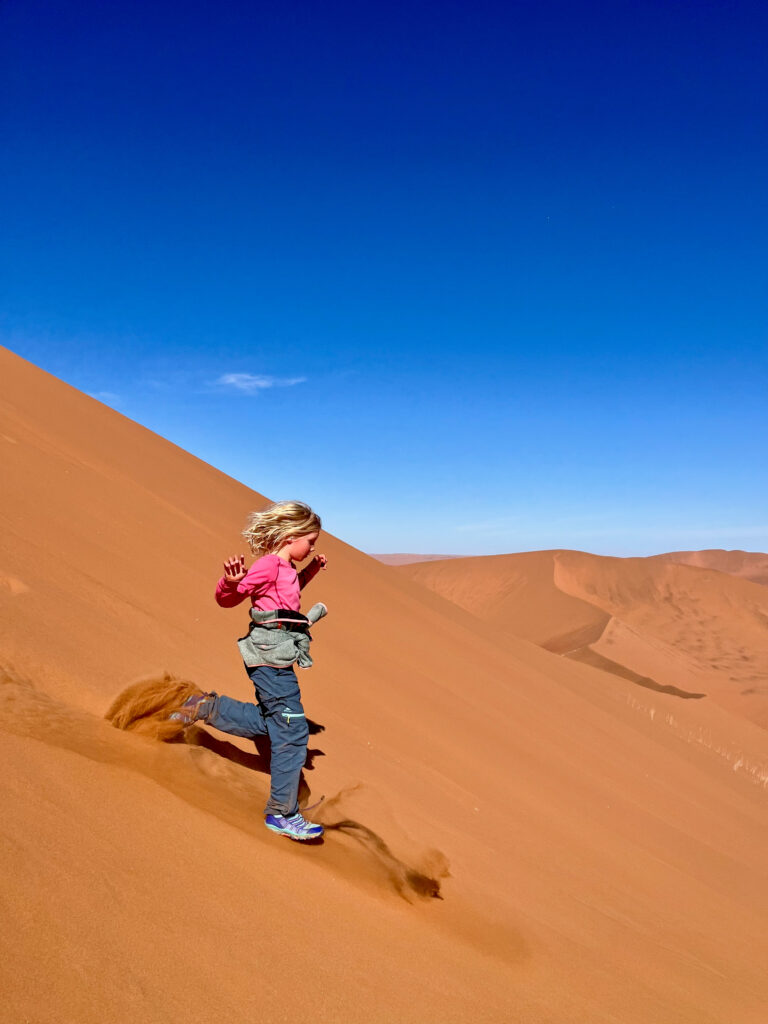

In the valley between the dunes is another salt pan, Deadvlei.

This pan was formed around 900 years ago when the Tsauchab River would flood during heavy rainfall, forming pools of water. This water allowed camel thorn trees to grow. However, 200 or so years later, the climate changed and the sand dunes began to fill in the pan, blocking the river from reaching the area. This climatic change was so rapid that not only did the trees die, they actually dried out as there was insufficient moisture for them to decompose and they were scorched by the sun.
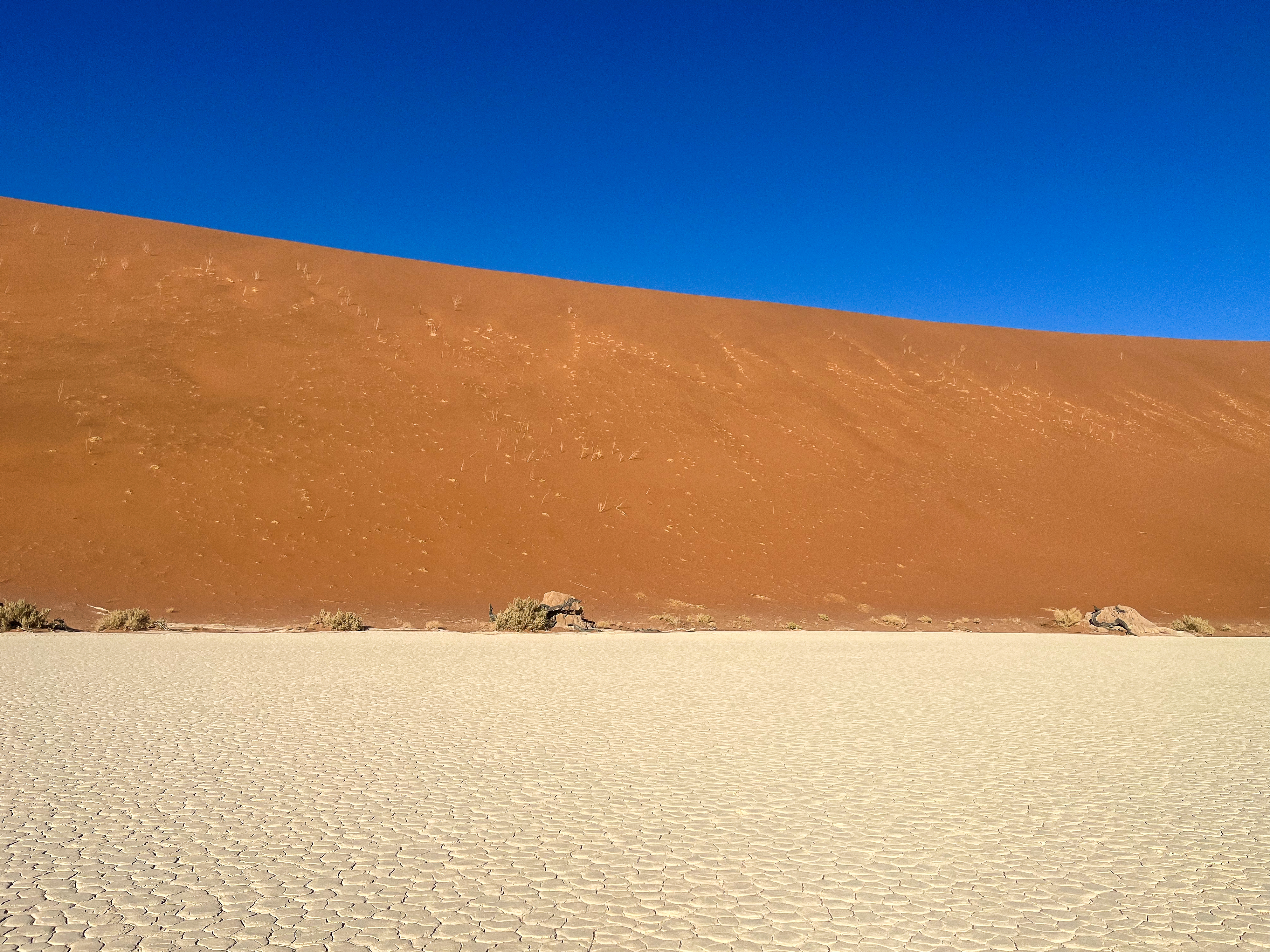
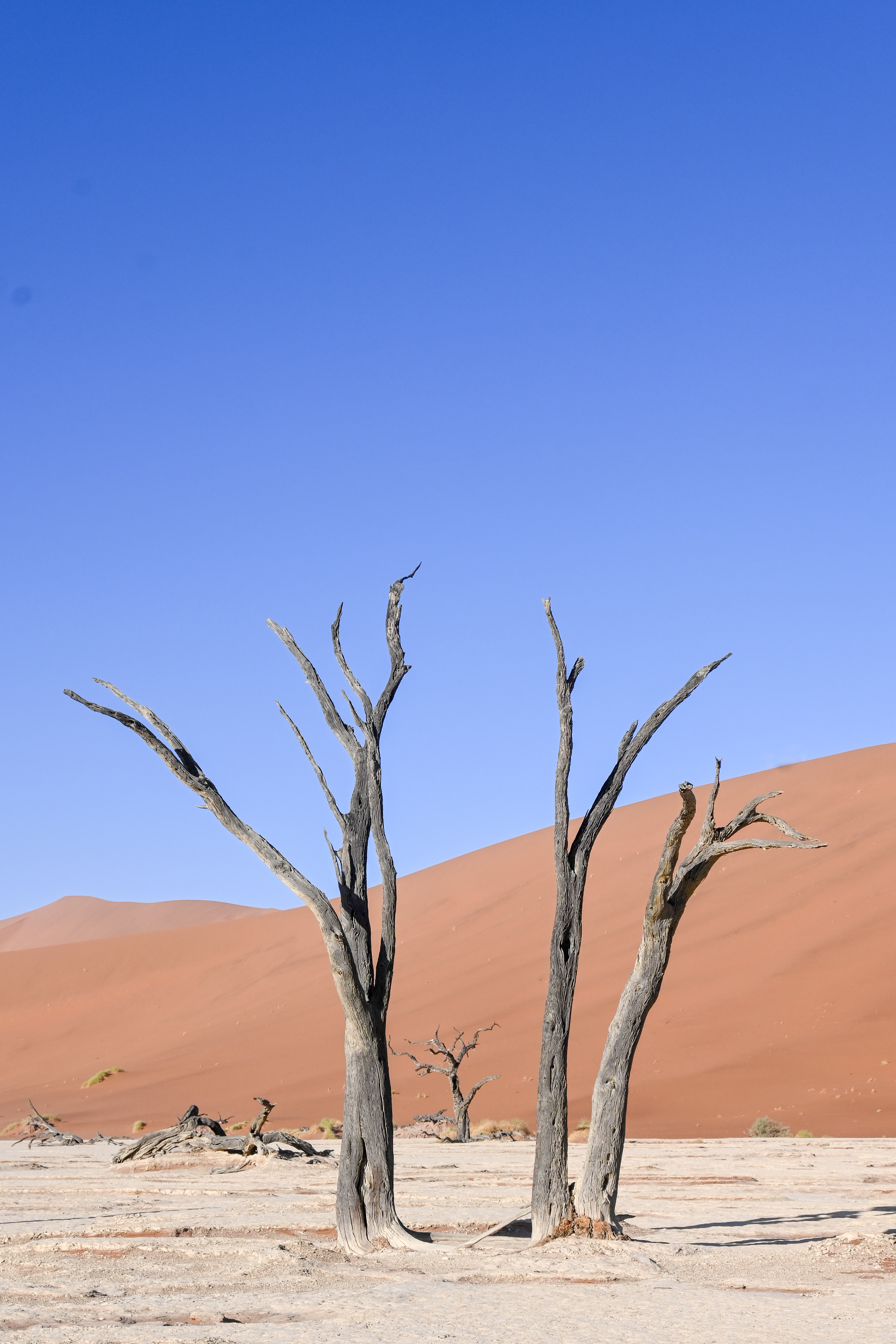

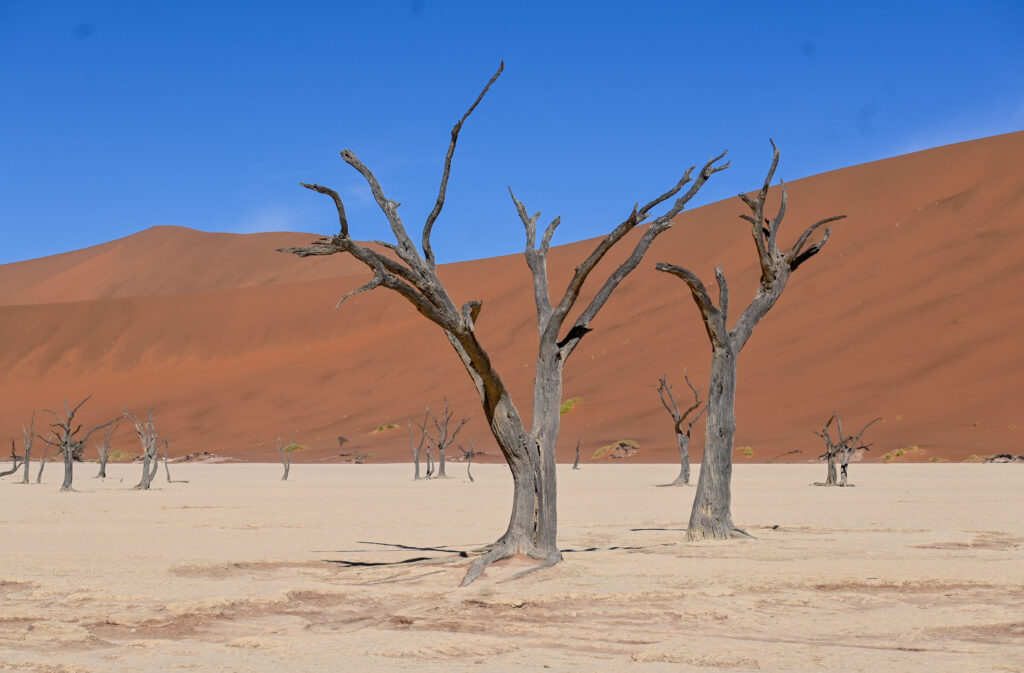
On the last night, we camped outside the outer gate as our National Park fees were only valid for 48 hours. The campsites were both really lovely and our Kiwi kids didn’t let winter stop them from swimming in the outdoor, unheated pools!
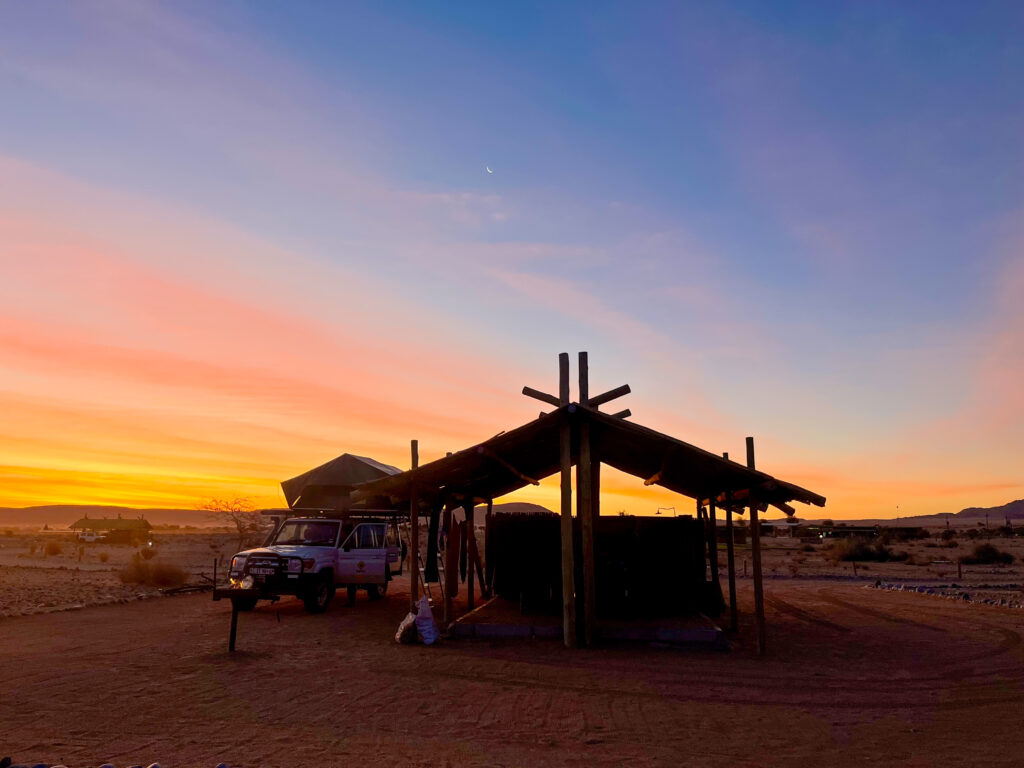
As we were finishing up for the evening, Lucas called out very calmly “I don’t want to alarm anyone, but there’s a snake”. Being VERY unfamiliar with snakes, Logan went around the other campsites to see if he could find anybody knowledgeable. A South African guy came over and instantly said “that’s dangerous, it’s a horned adder”! Thankfully as it is winter, he was a pretty small and a pretty slow snake – but that didn’t stop him hissing at us. Despite feeling a bit scared, Logan bravely used some long tent pegs to move him away from our campsite, and we just hoped it didn’t have a bunch of friends coming along behind him!
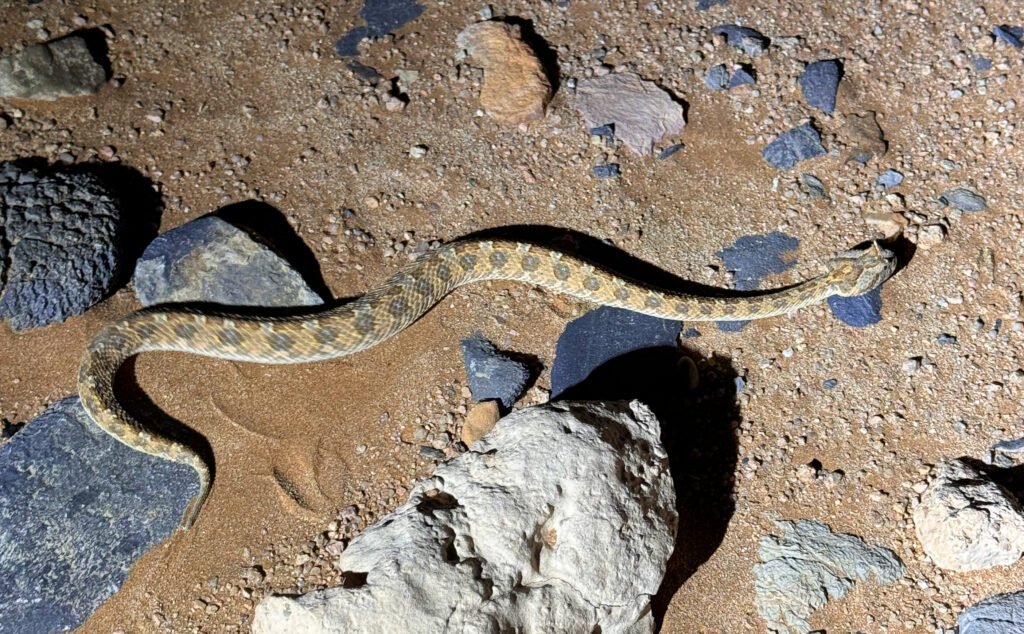
We continued to head north beside the National Park, crossing the Tropic of Capricorn.
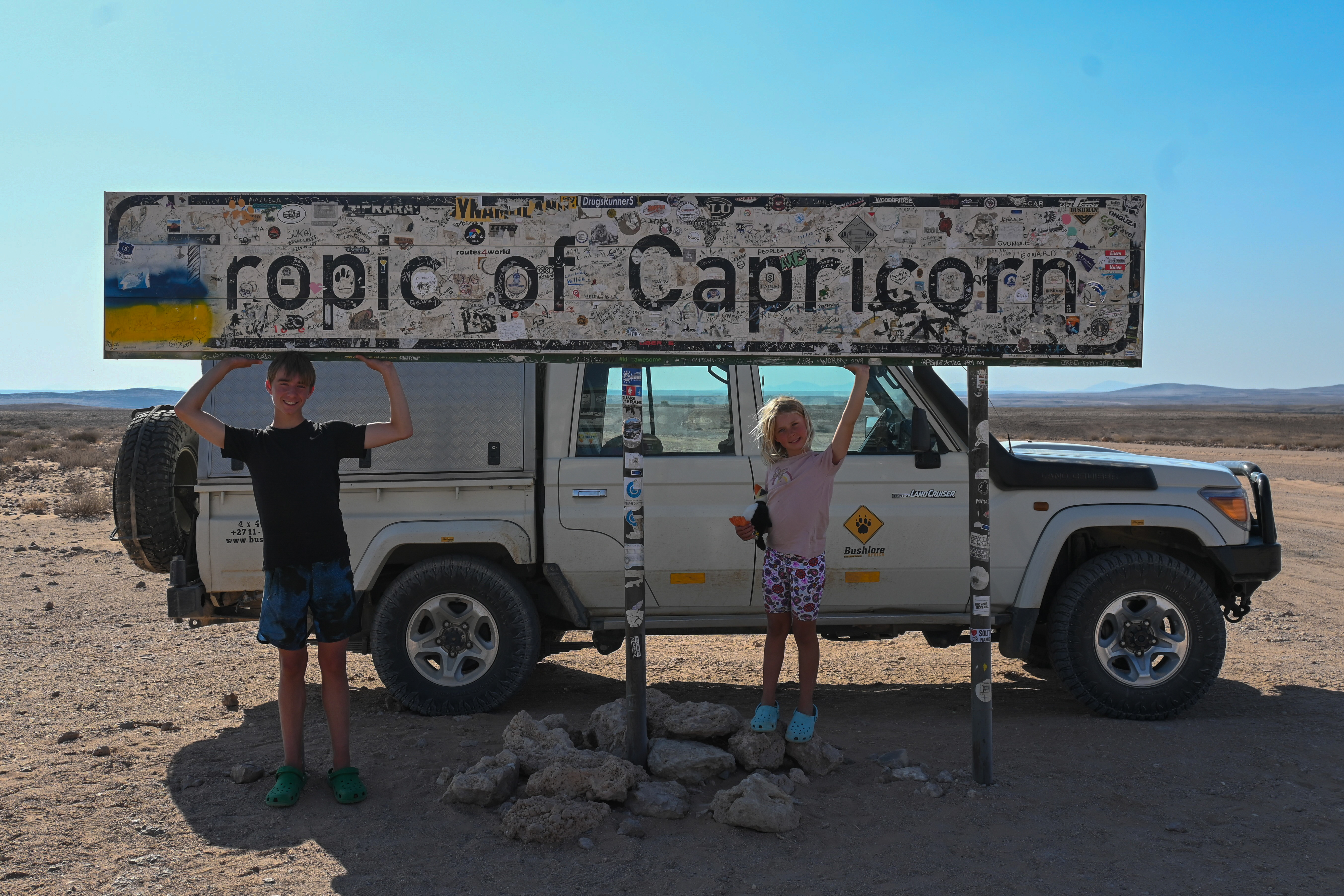
We had another beautiful night wild camping in a field full of yellow grass, huge lumps of quartz, and ostrich feathers.

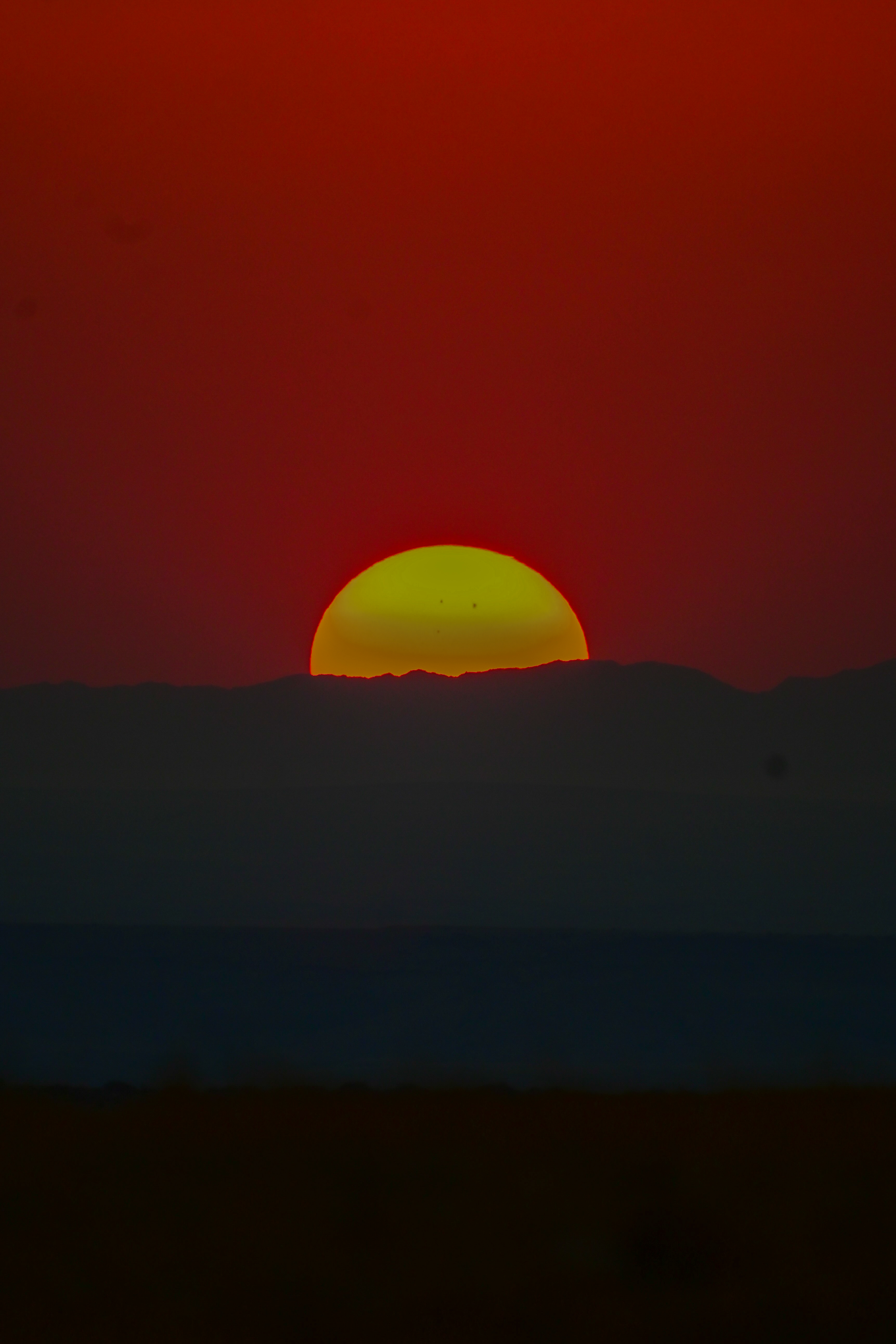
In the morning we went for a wander through the field and over some rocks when Zara suddenly said, also very calmly, “ I just stood on a snake”! It was another horned adder but thankfully even smaller and slower than the first. In hindsight Zara was terrified of what could have happened, but was so glad that the incident itself was not actually scary as it was over before she’d even processed it. Phew!
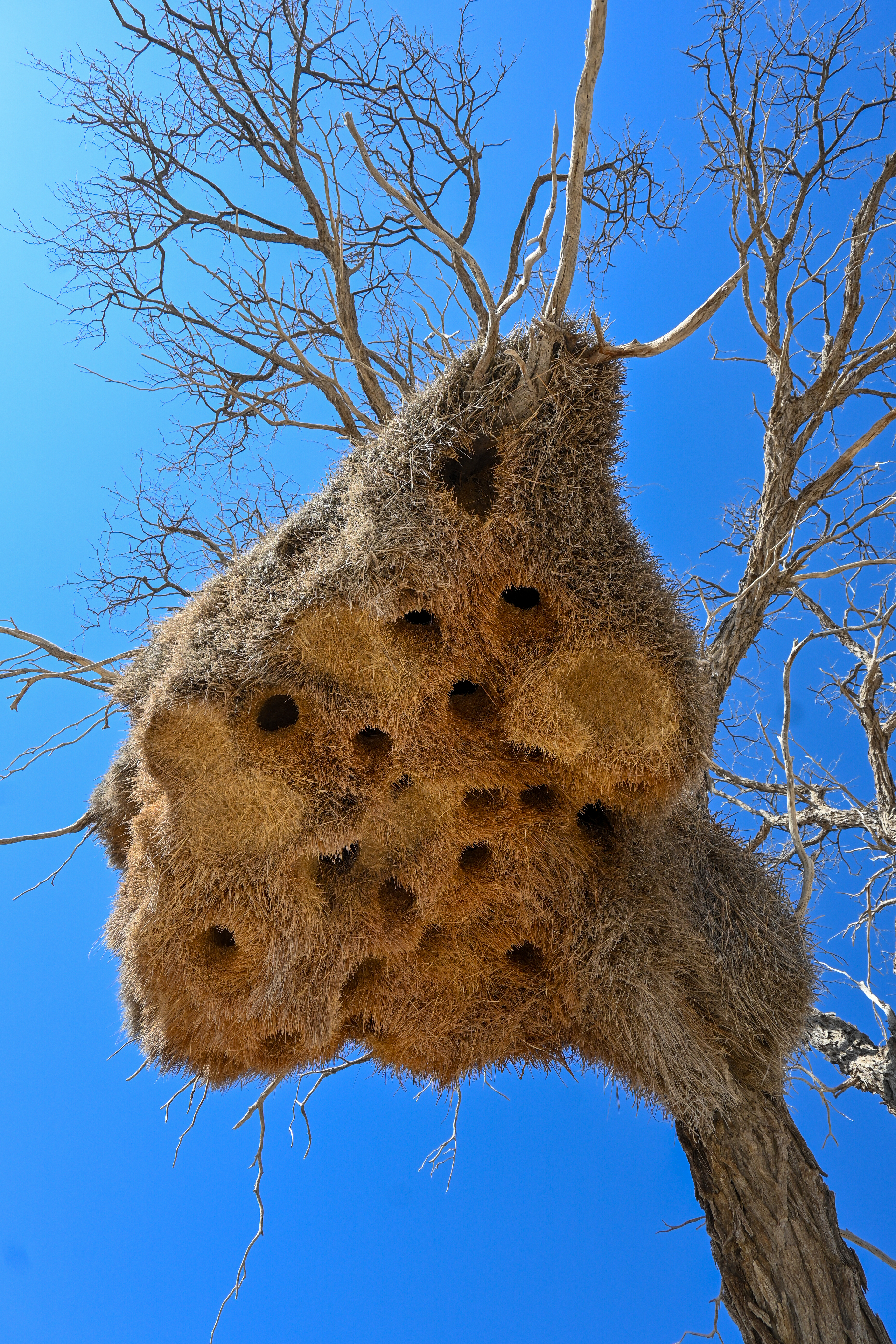
We stopped briefly at Walvis Bay to see the pelicans and flamingoes cruising on the beach together.

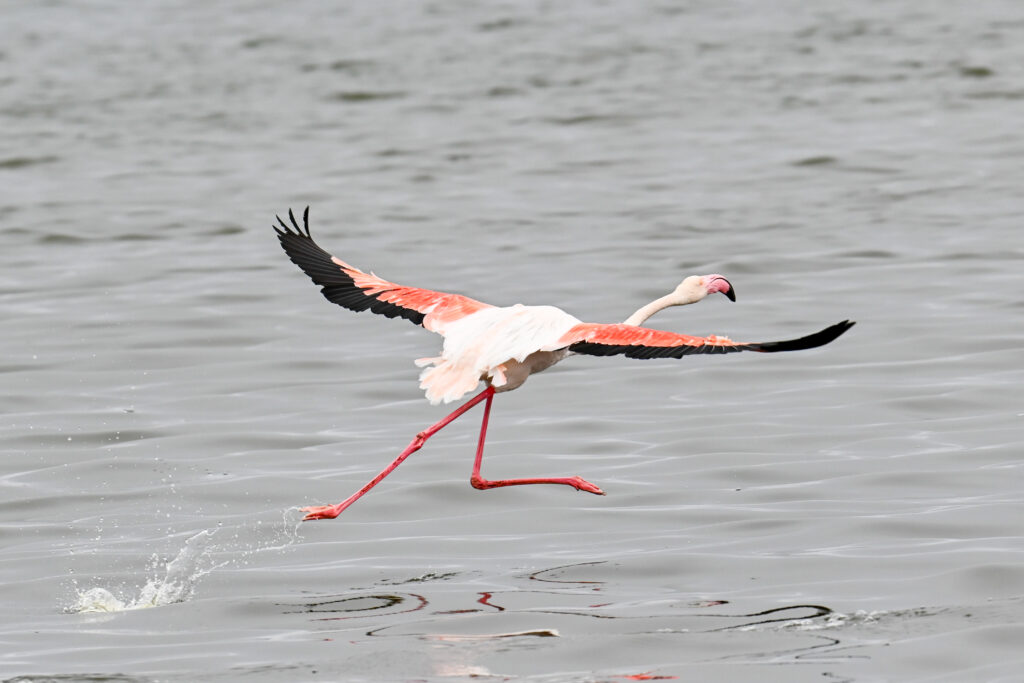
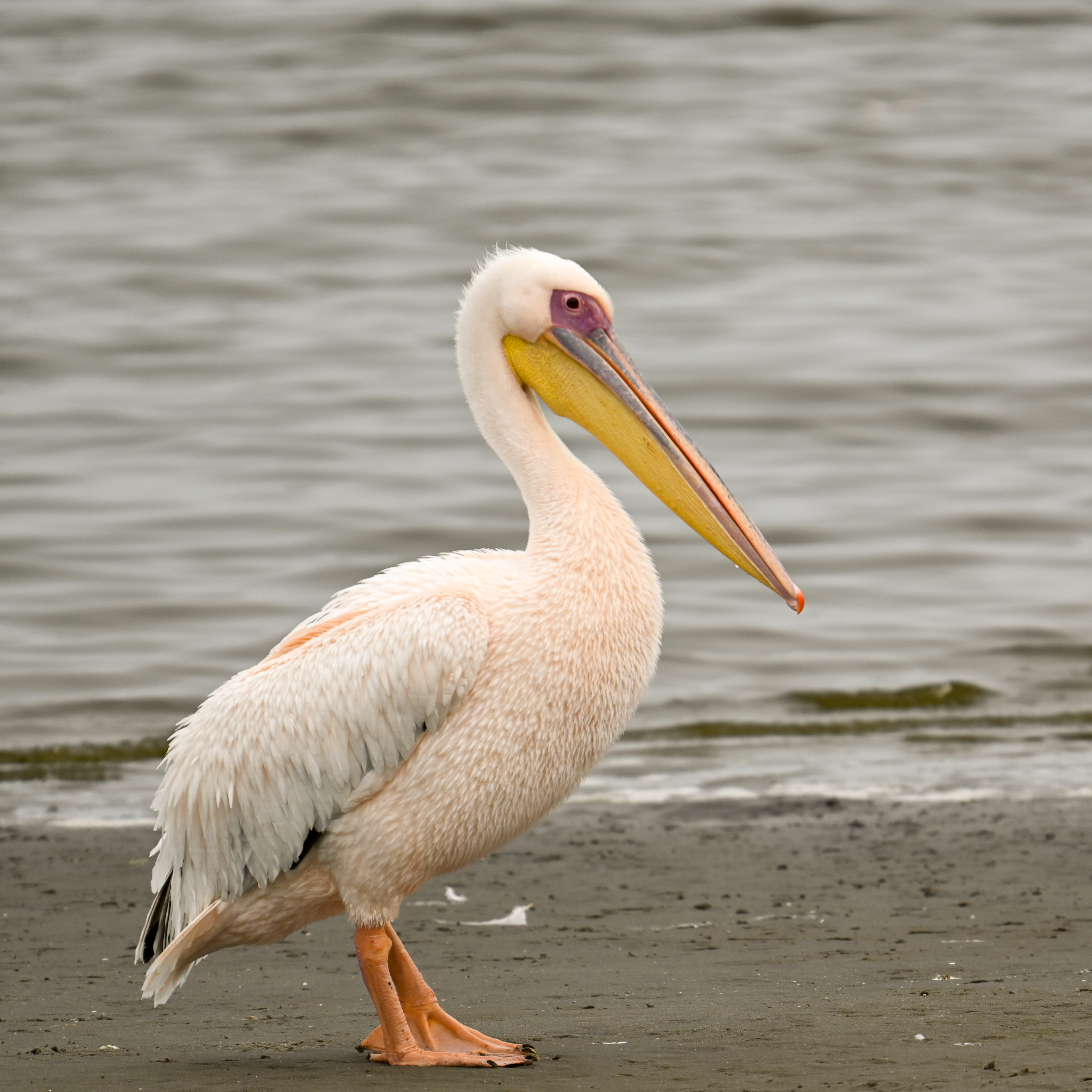

Our last stop for Africa Part 1 was Swakopmund – Namibia’s adventure capital. Of all the activities available, we decided to try sand boarding on a huge sand dune in the Dorab National Park. It was so fun! Initially Zara wasn’t sure if she wanted to do it, but she absolutely loved it and hooned down the dune! Lucas tried stand up boarding on a snowboard – he was so good considering he’s only been on a snowboard once before. The guides were impressed by the way he listened to their advice and he has been invited back as a guide if he’s ever back in Swakopmund when he’s a bit older! The rest of us used lie-down boards (and Lucas had a couple of runs on a lie-down too). We each had 7 runs down different slopes over about 2 hours, with the slopes getting steeper and longer each time. We had to walk up the sand dune to the top again after each run but there was lots of time to chill and watch the others in between. The guides had a speed gun so they could clock how fast we were going – nothing like a bit of competition when you’re hurtling down a sand dune! We were all clocked at over 70 km/hour but I officially have FULL bragging rights for being the fastest out of everybody! 77 km/hour! Such fun!
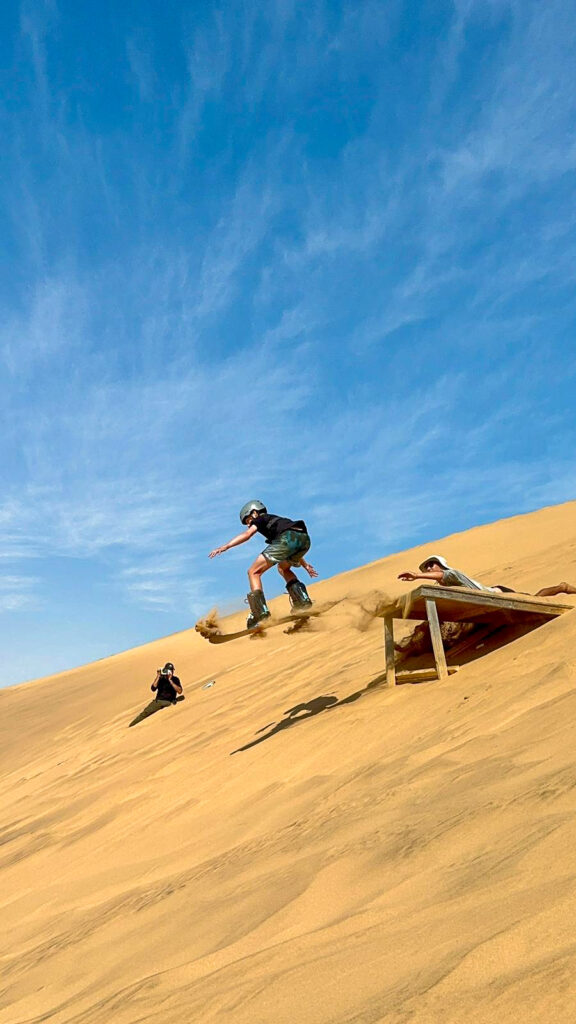
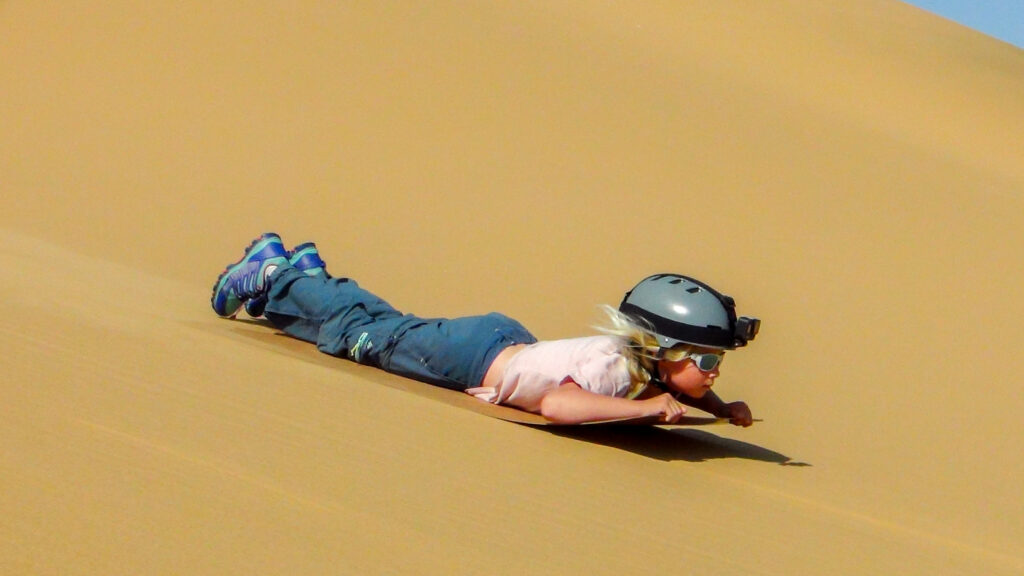
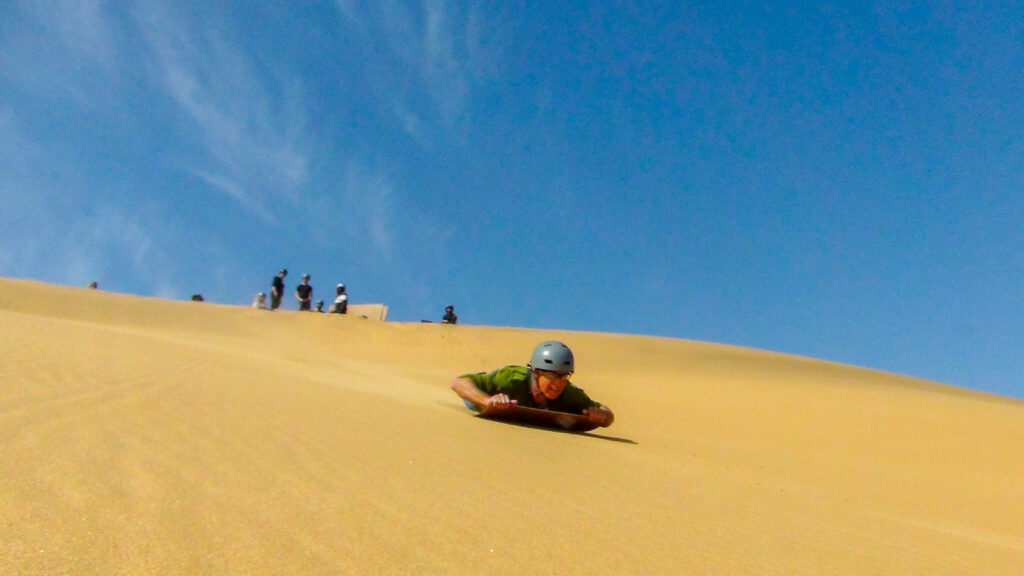
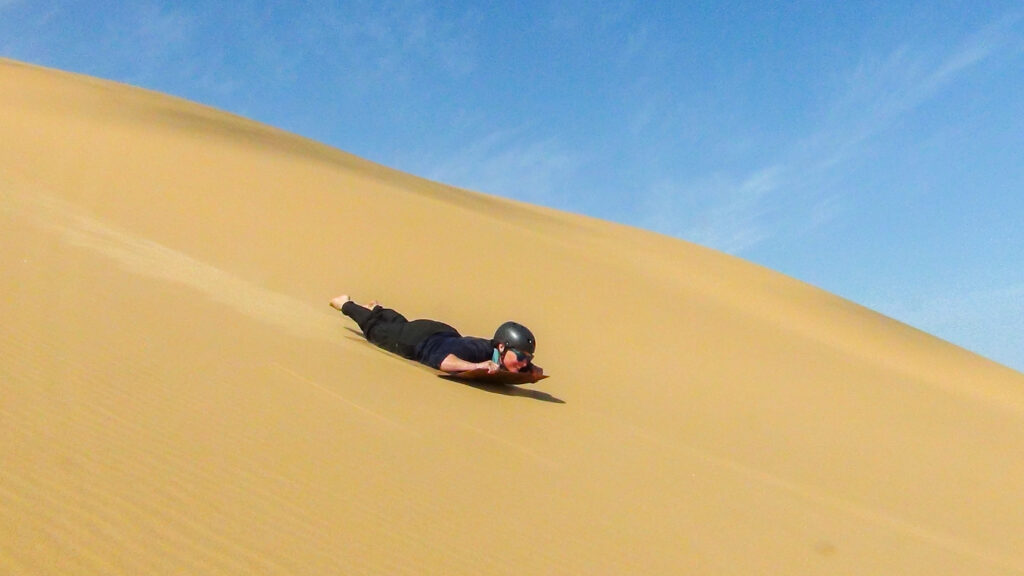
We have spent 3 nights in Swakopmund, giving us a chance to restock, recharge and do some souvenir shopping before setting off again tomorrow. As expected, we are thoroughly enjoying the pace, the people and the beauty of Namibia.
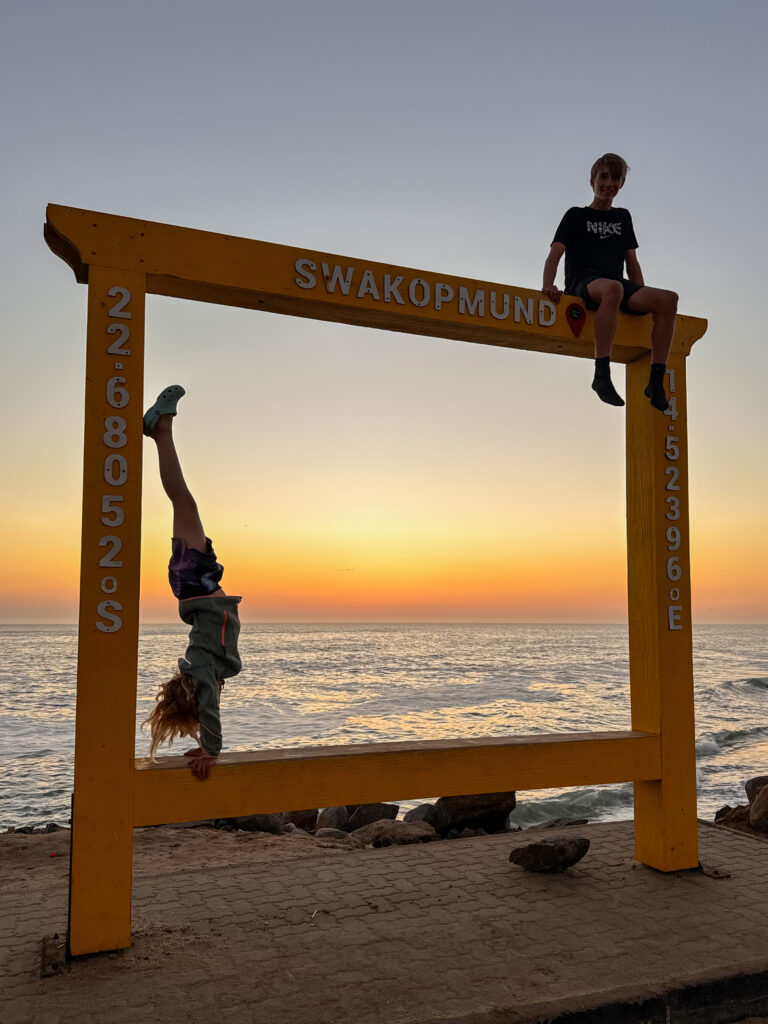
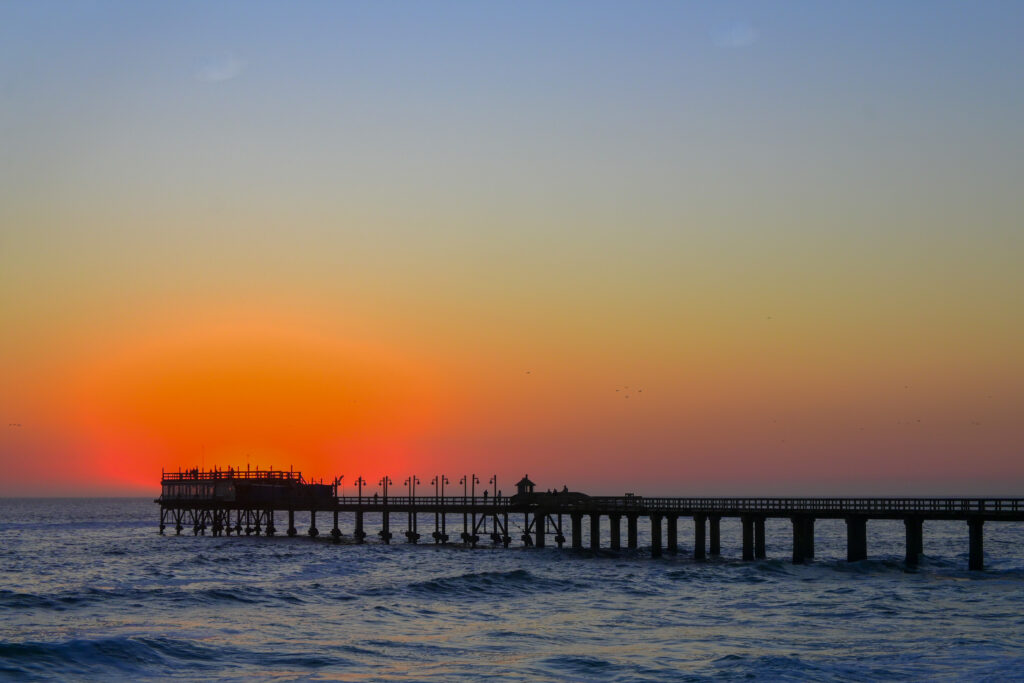
Sand boarding!!!!!!!!!
Lucky you Lucas!!!!!!!